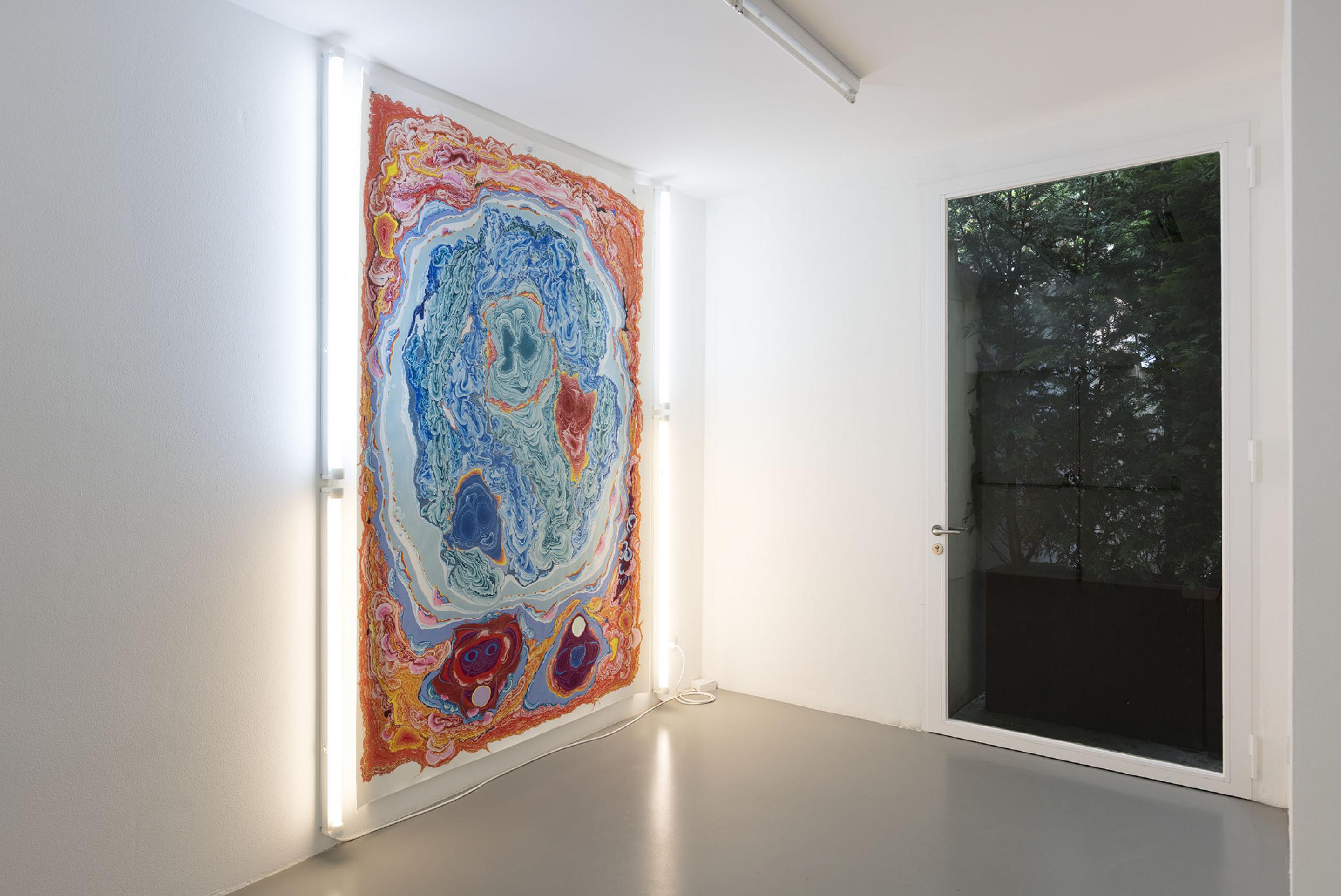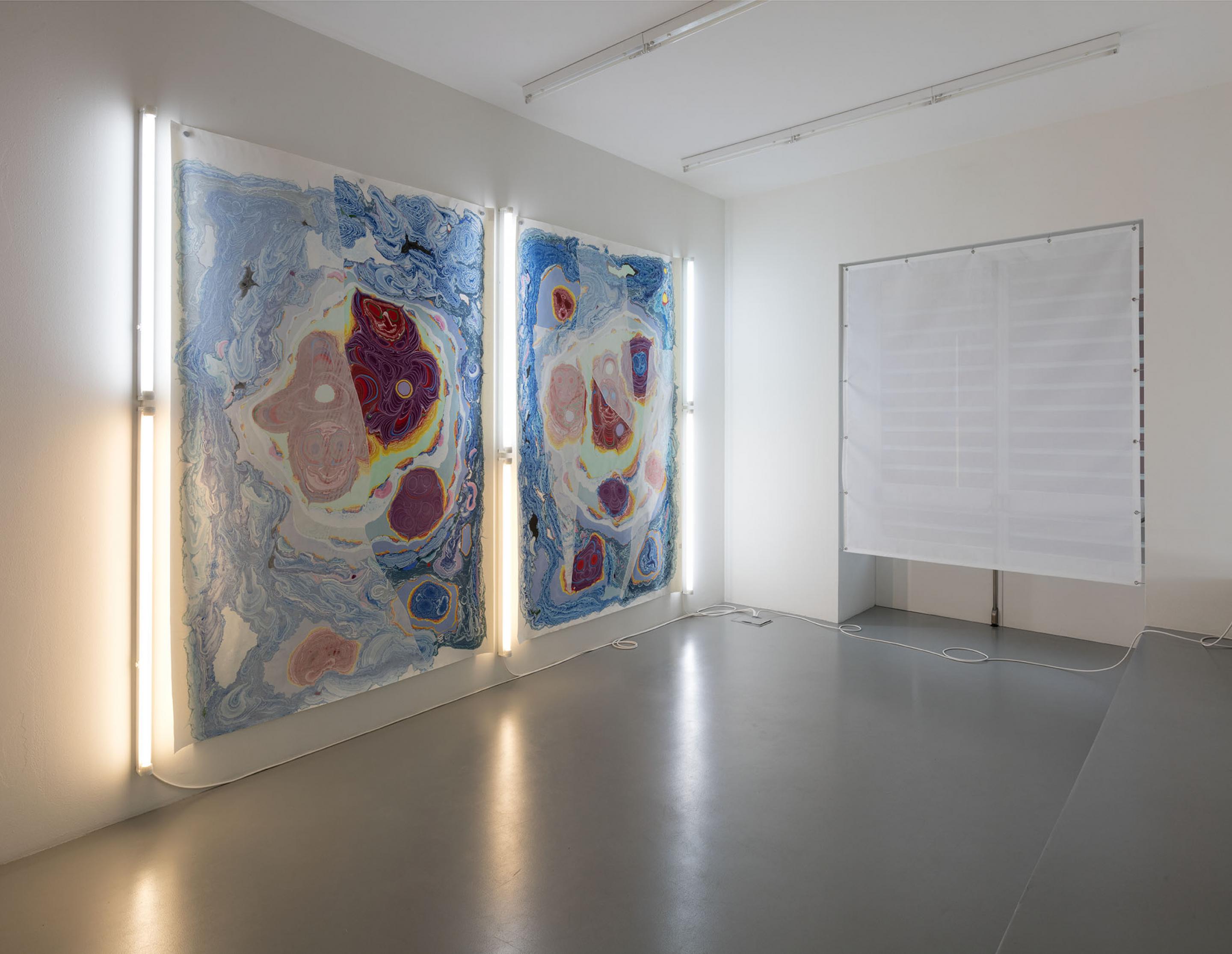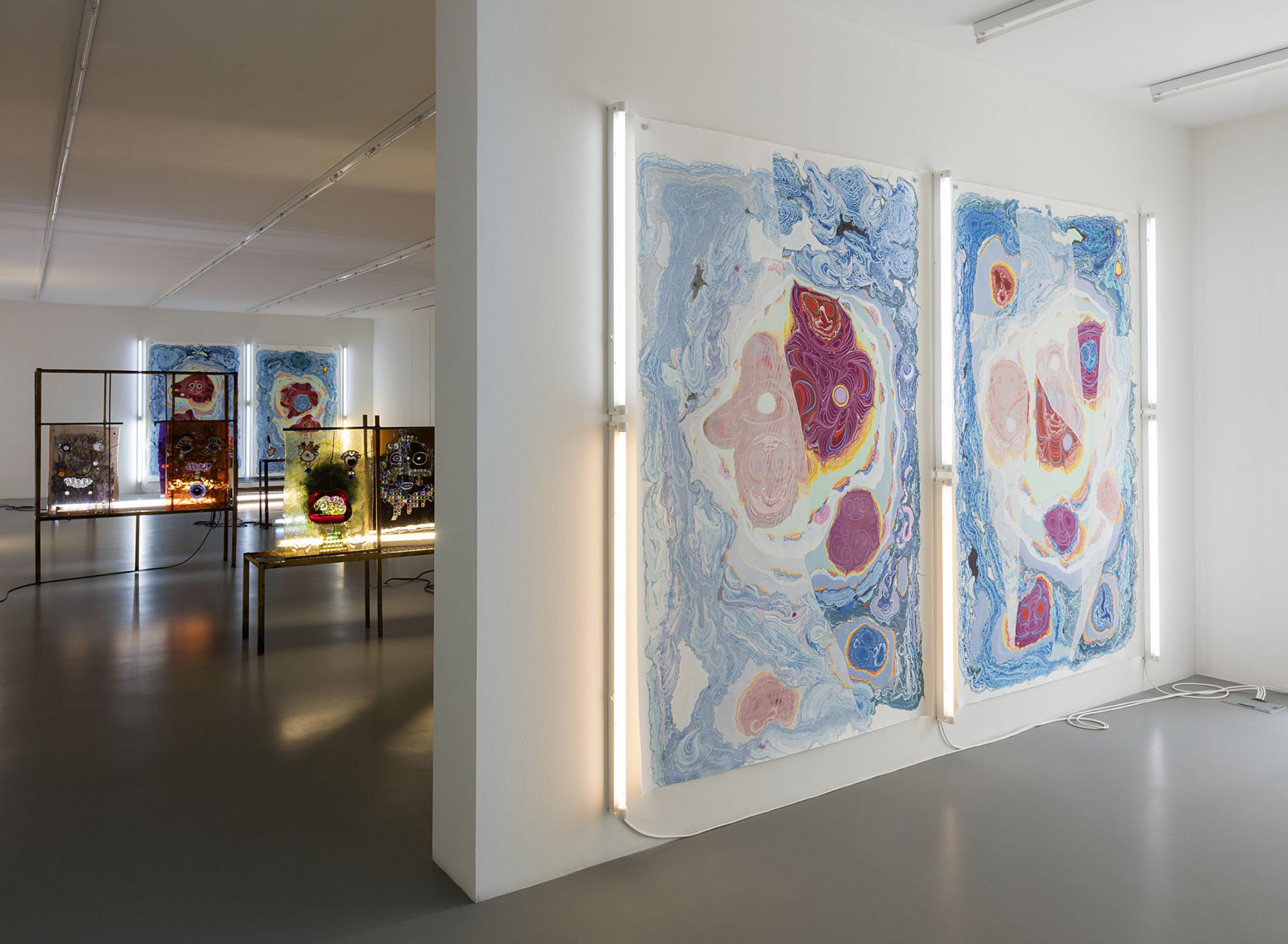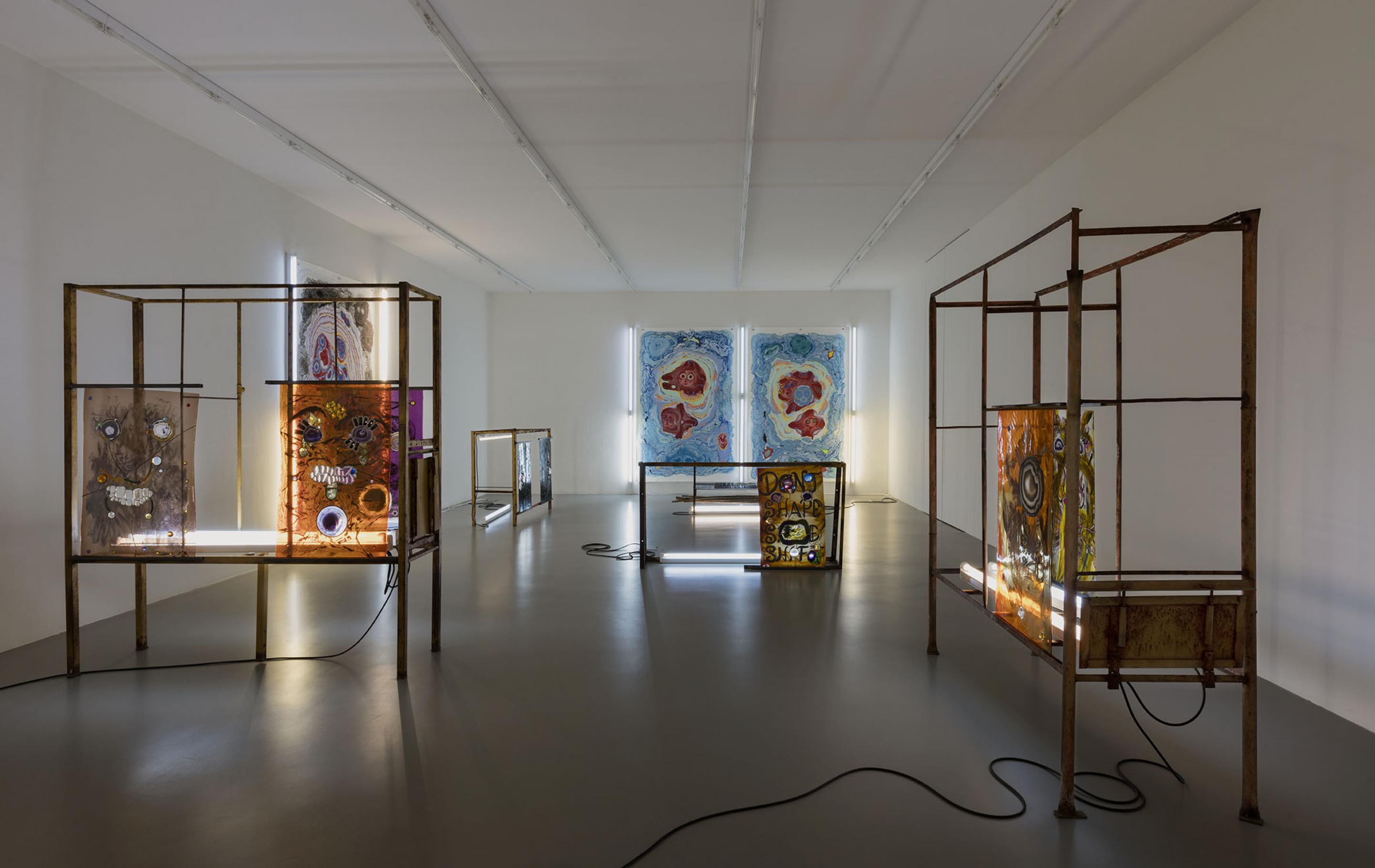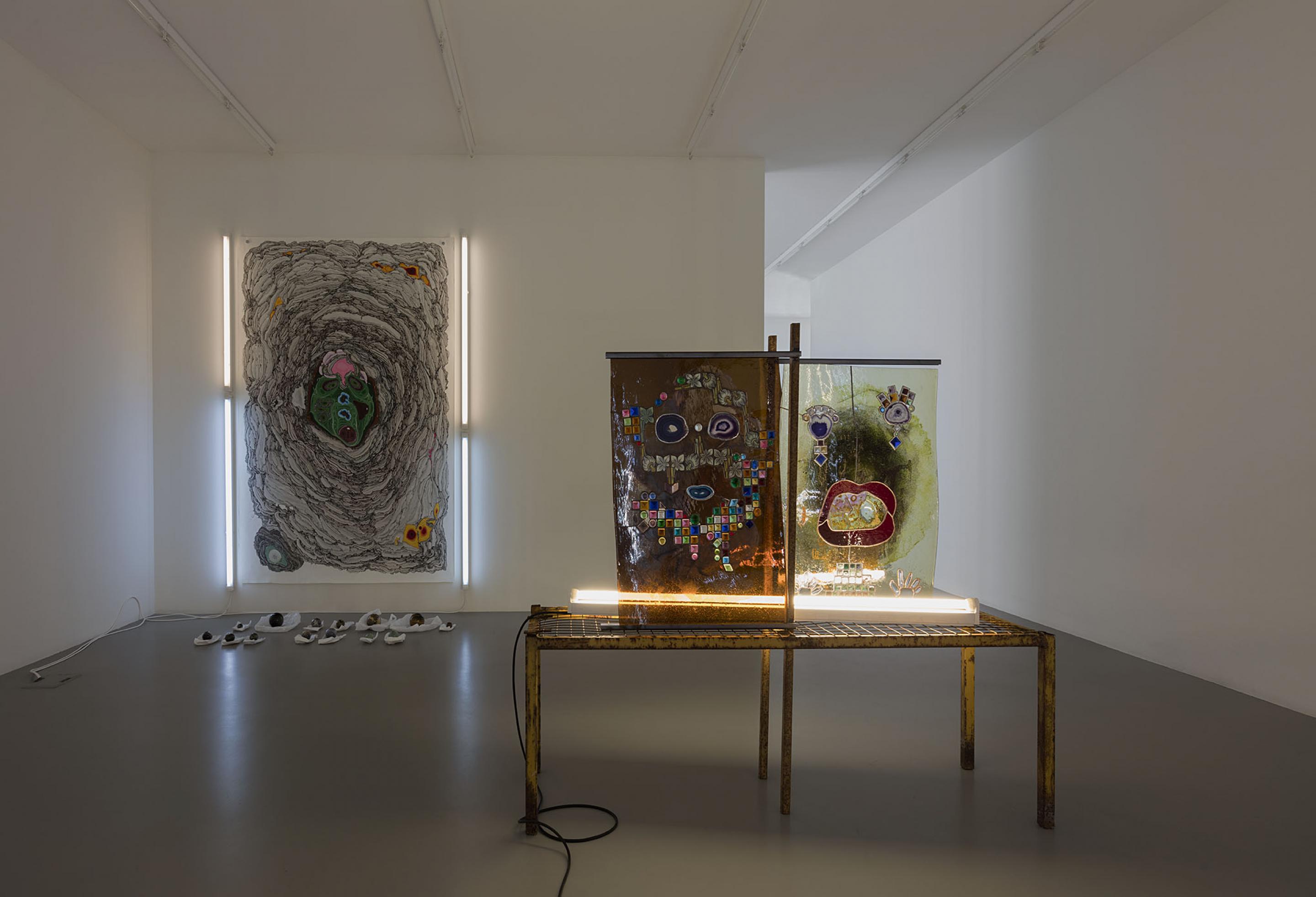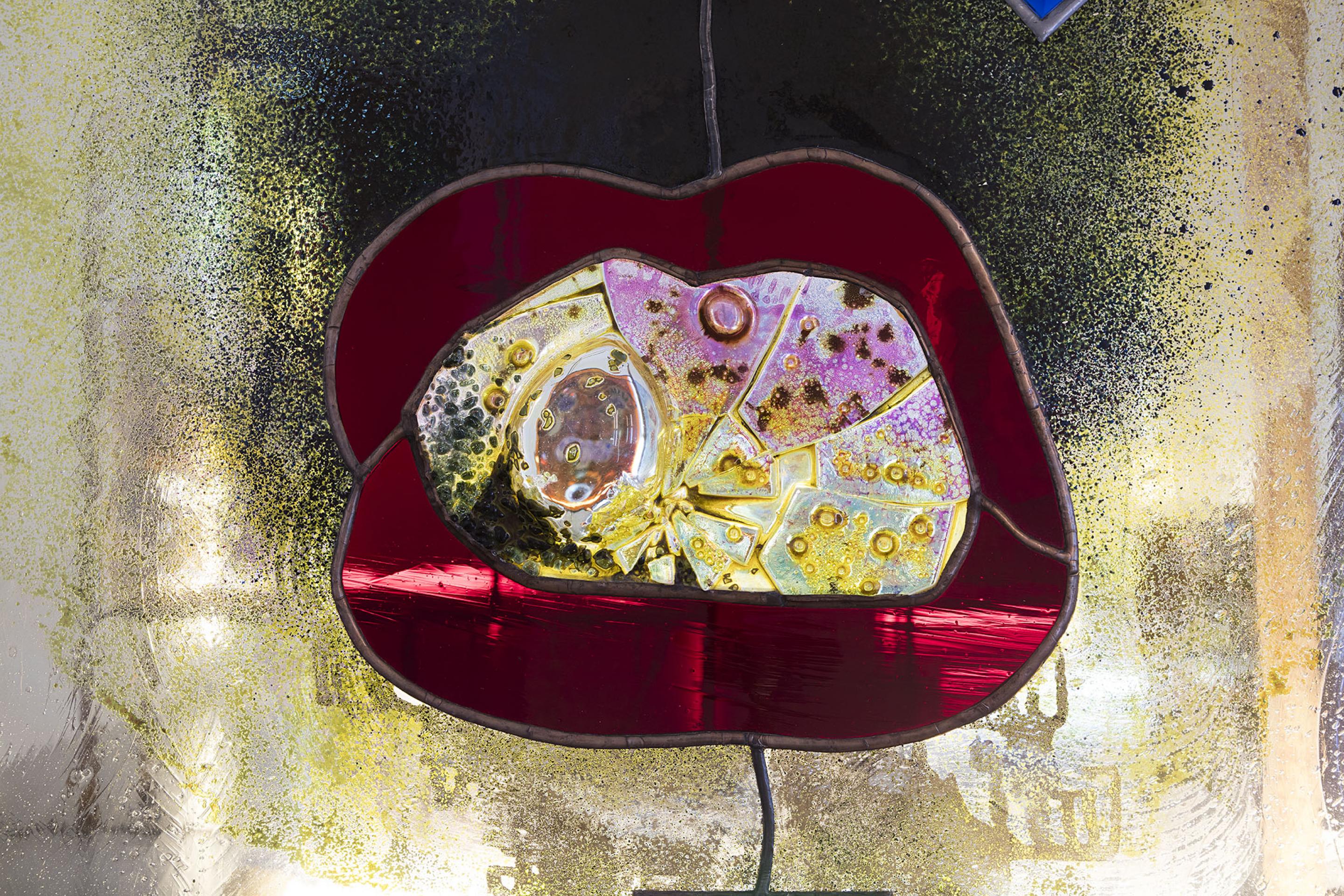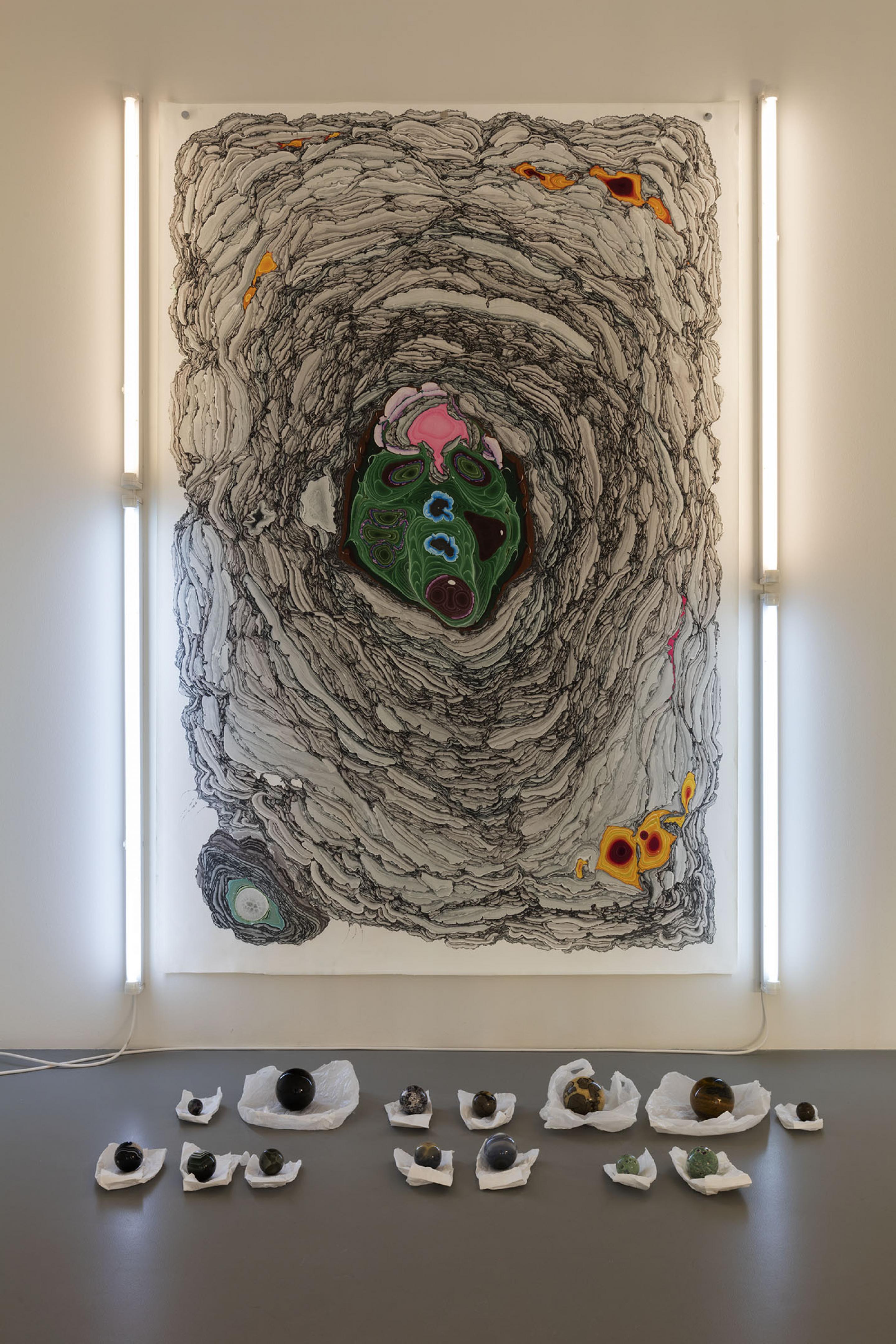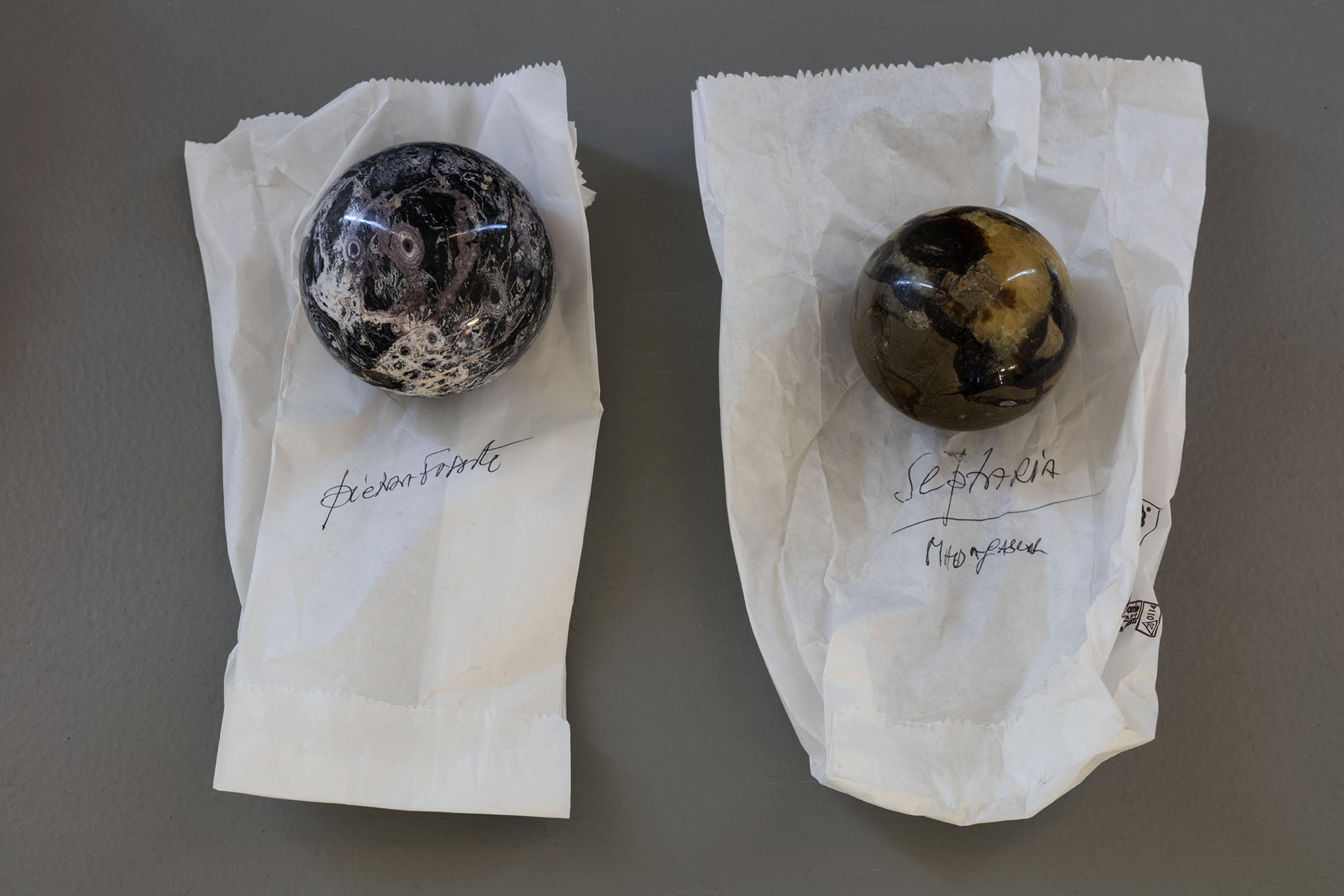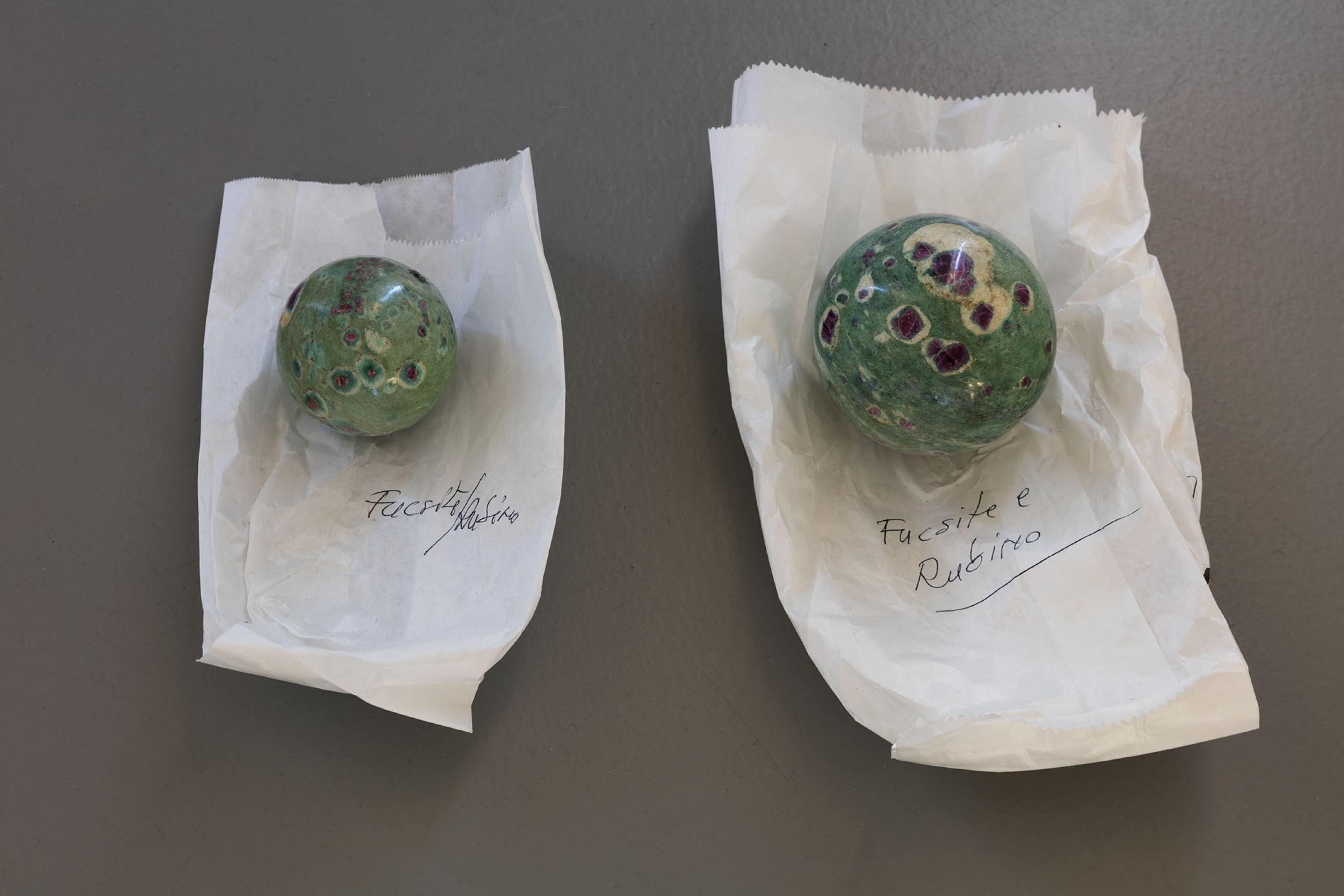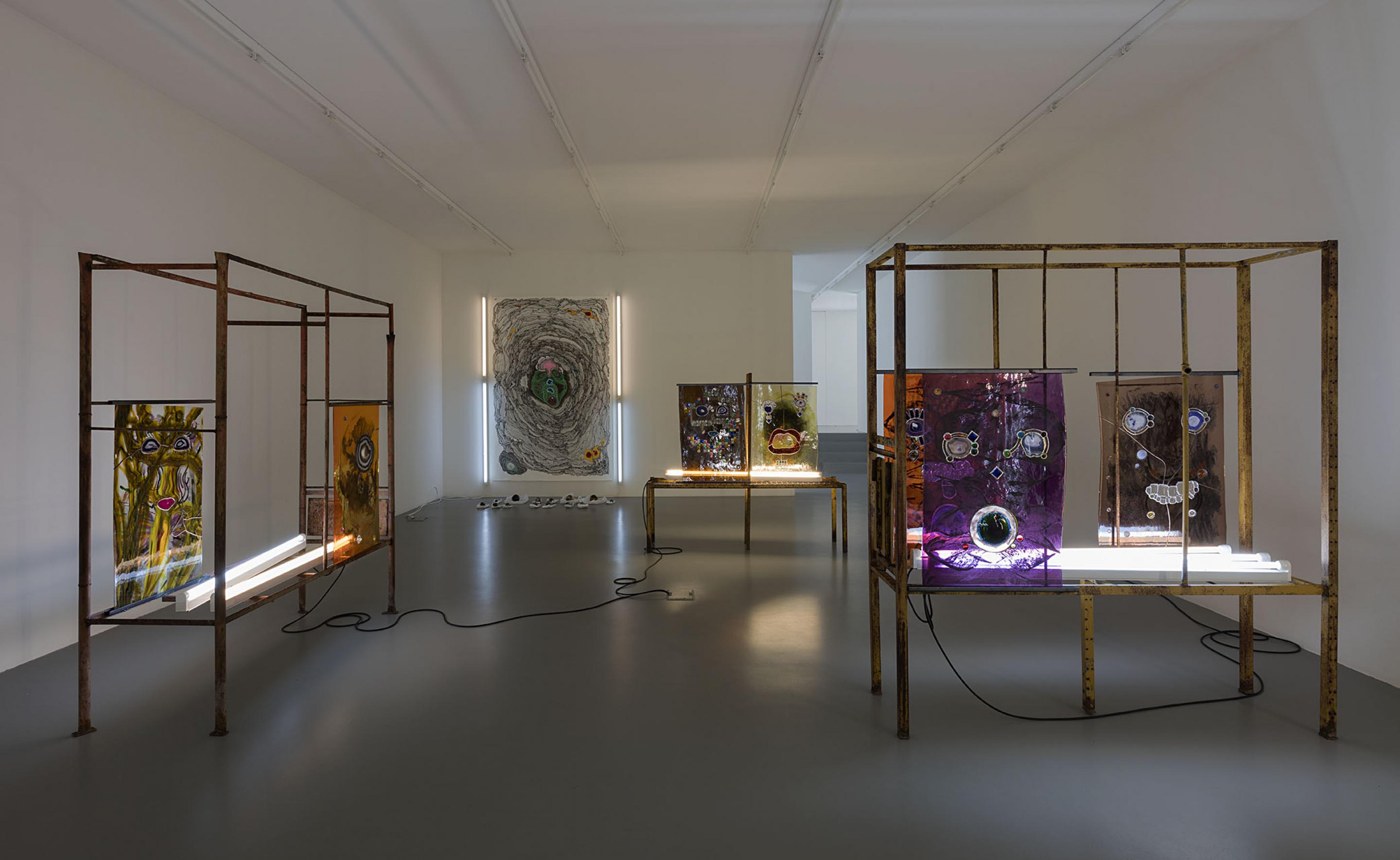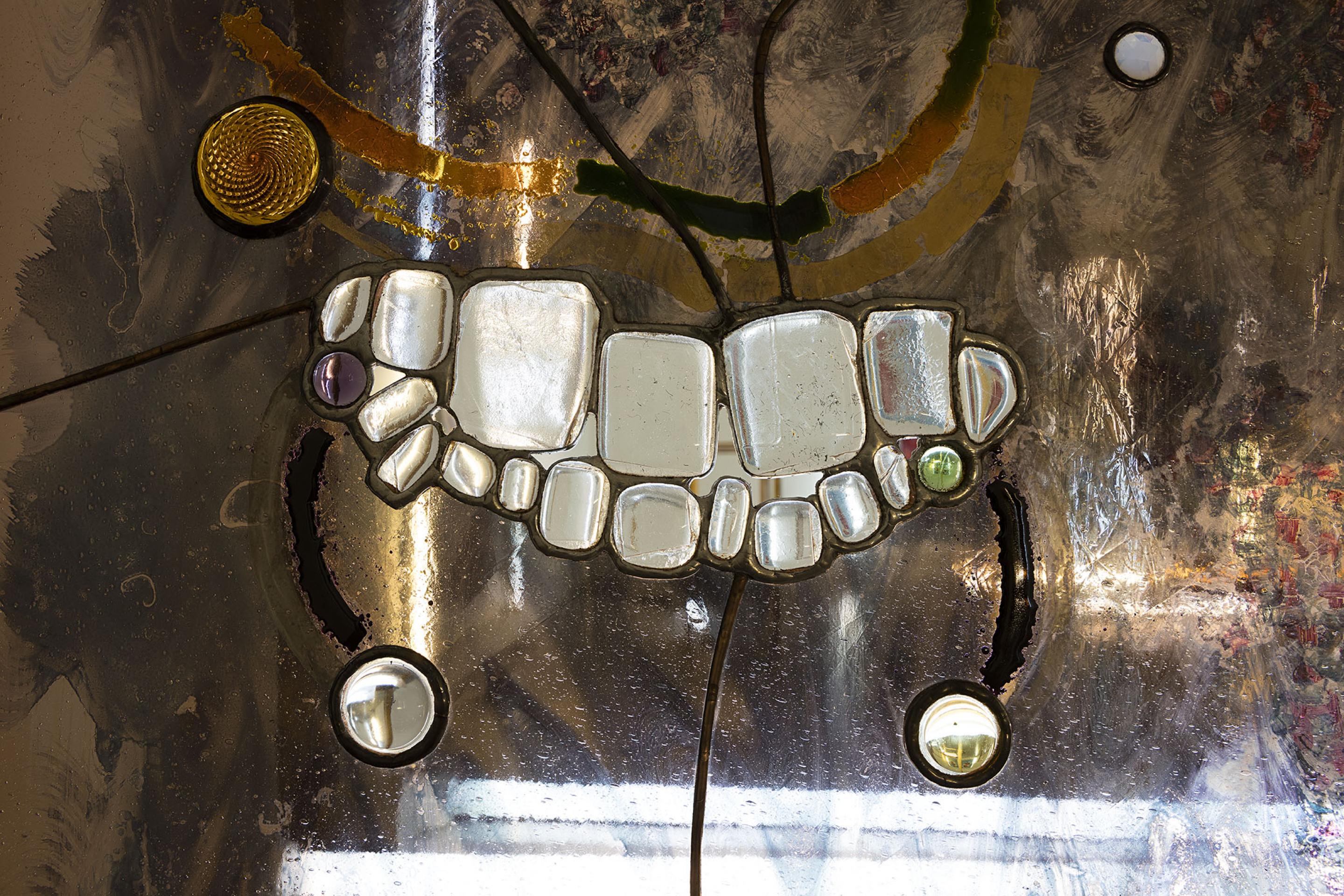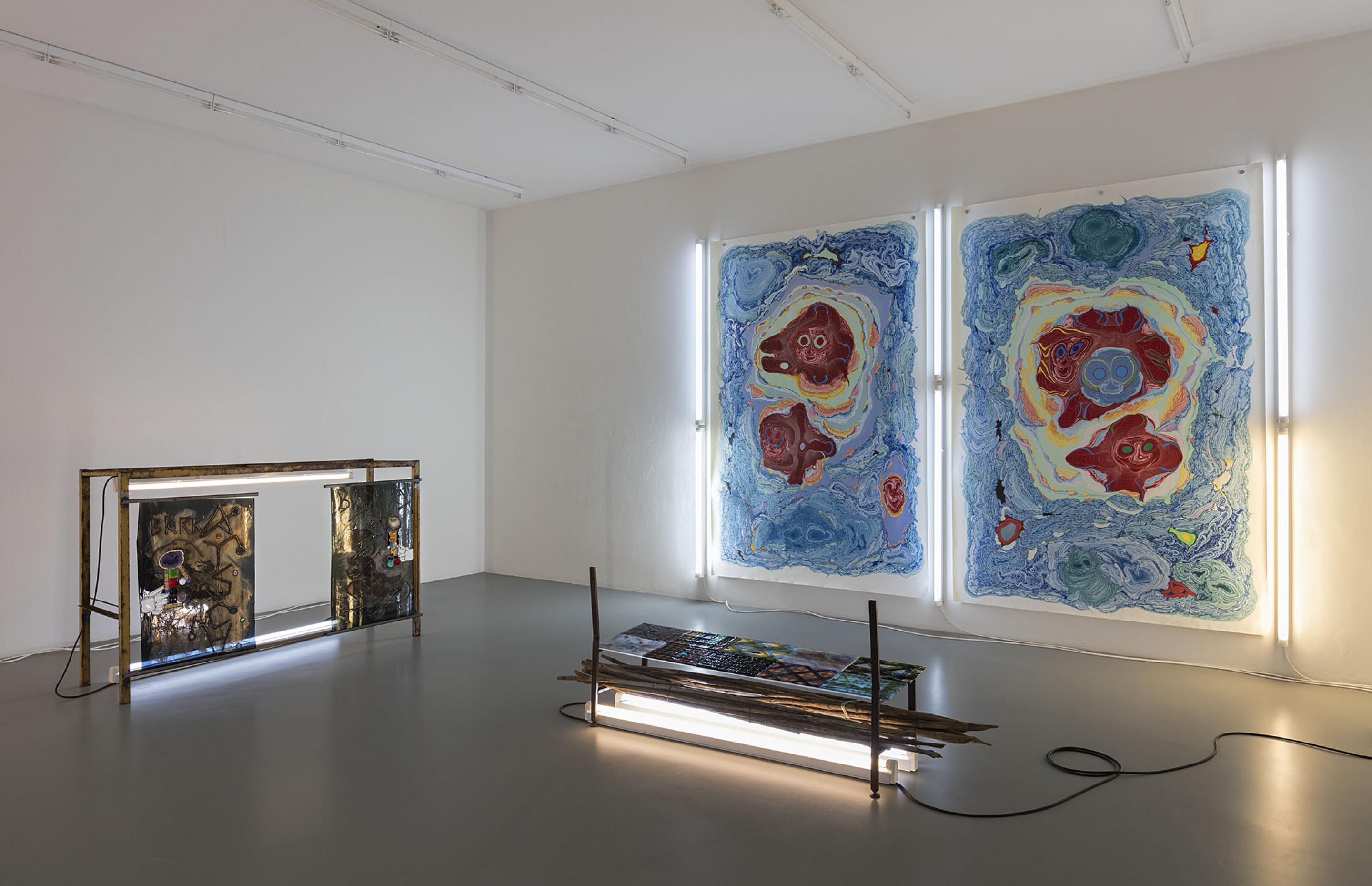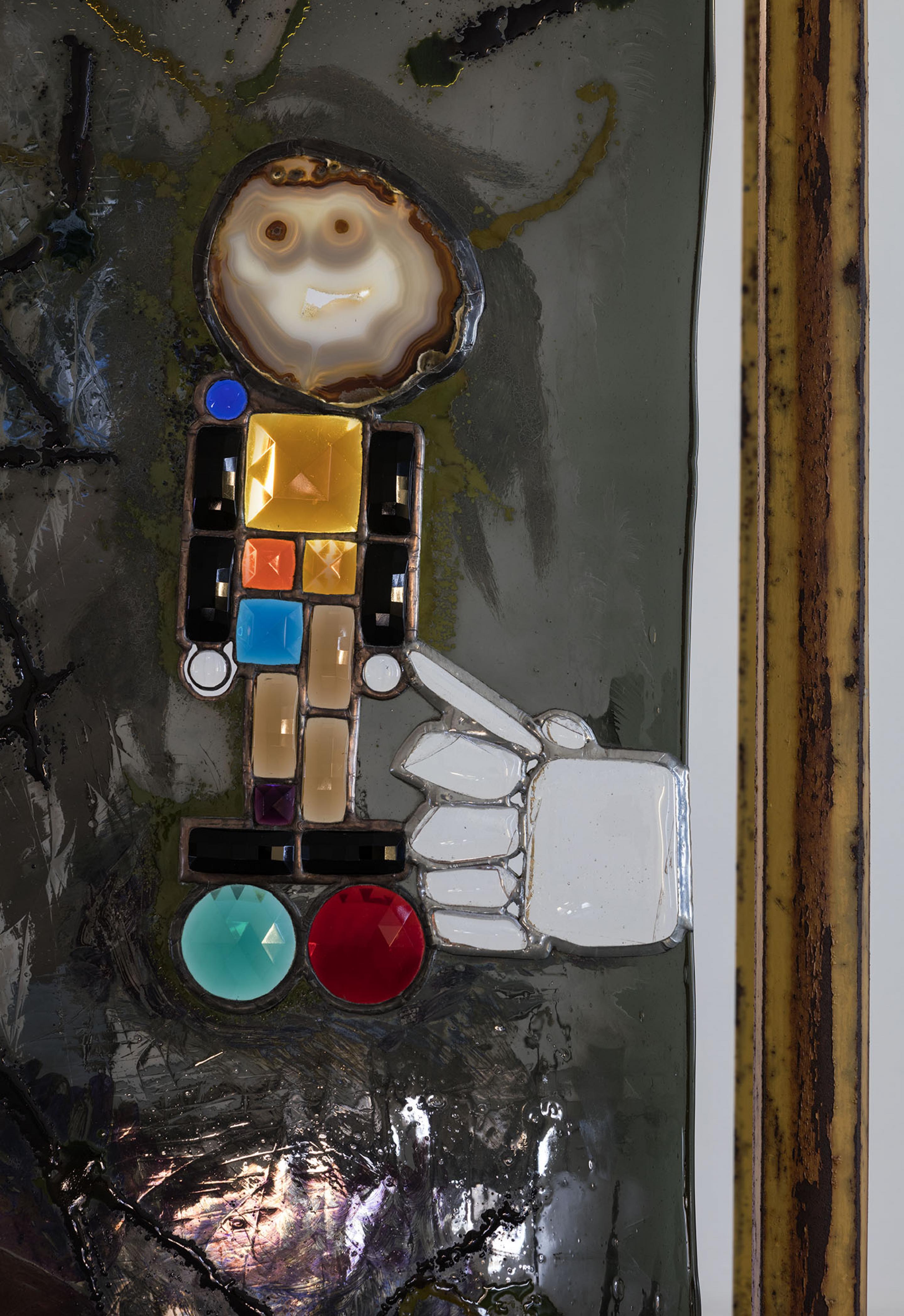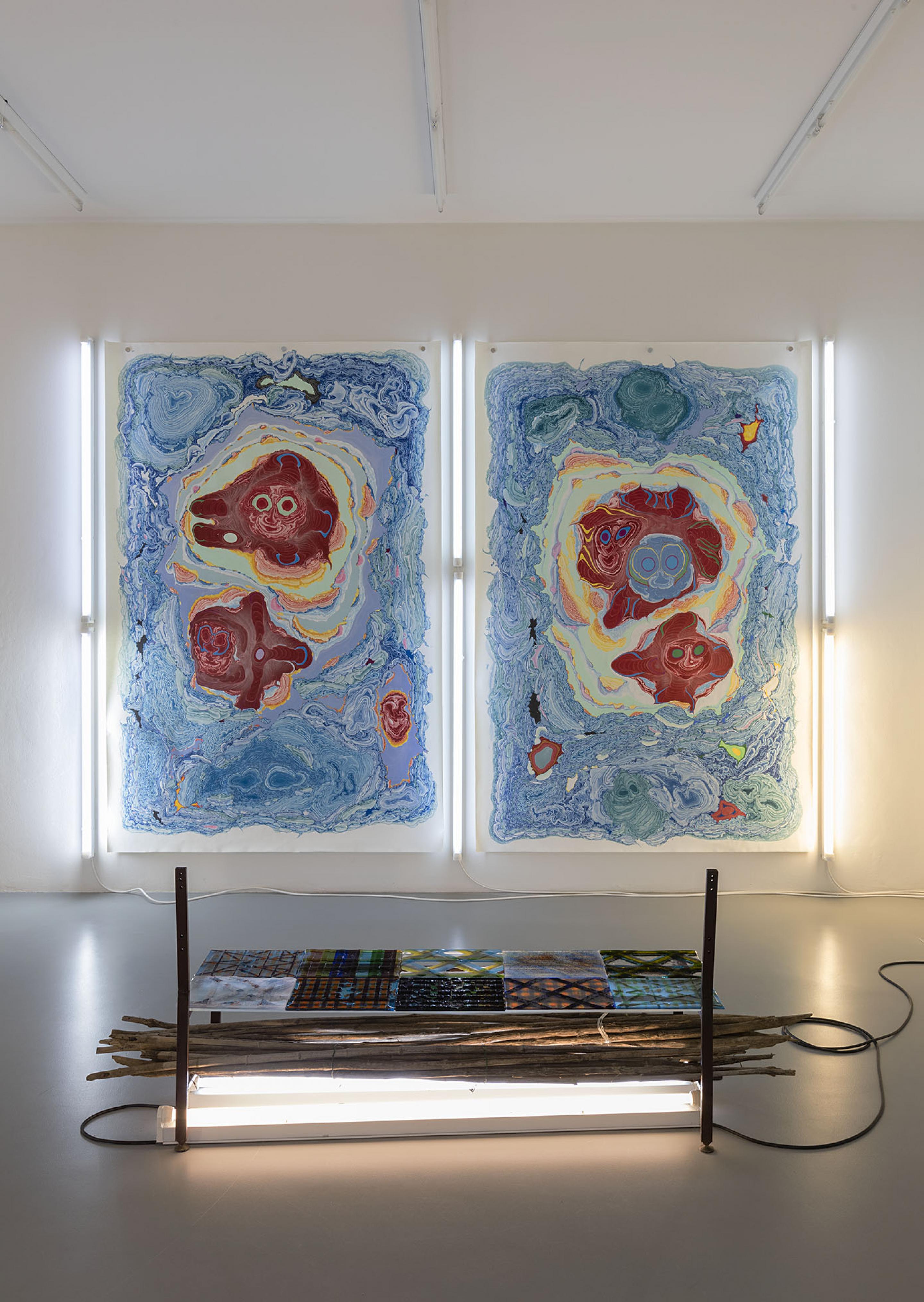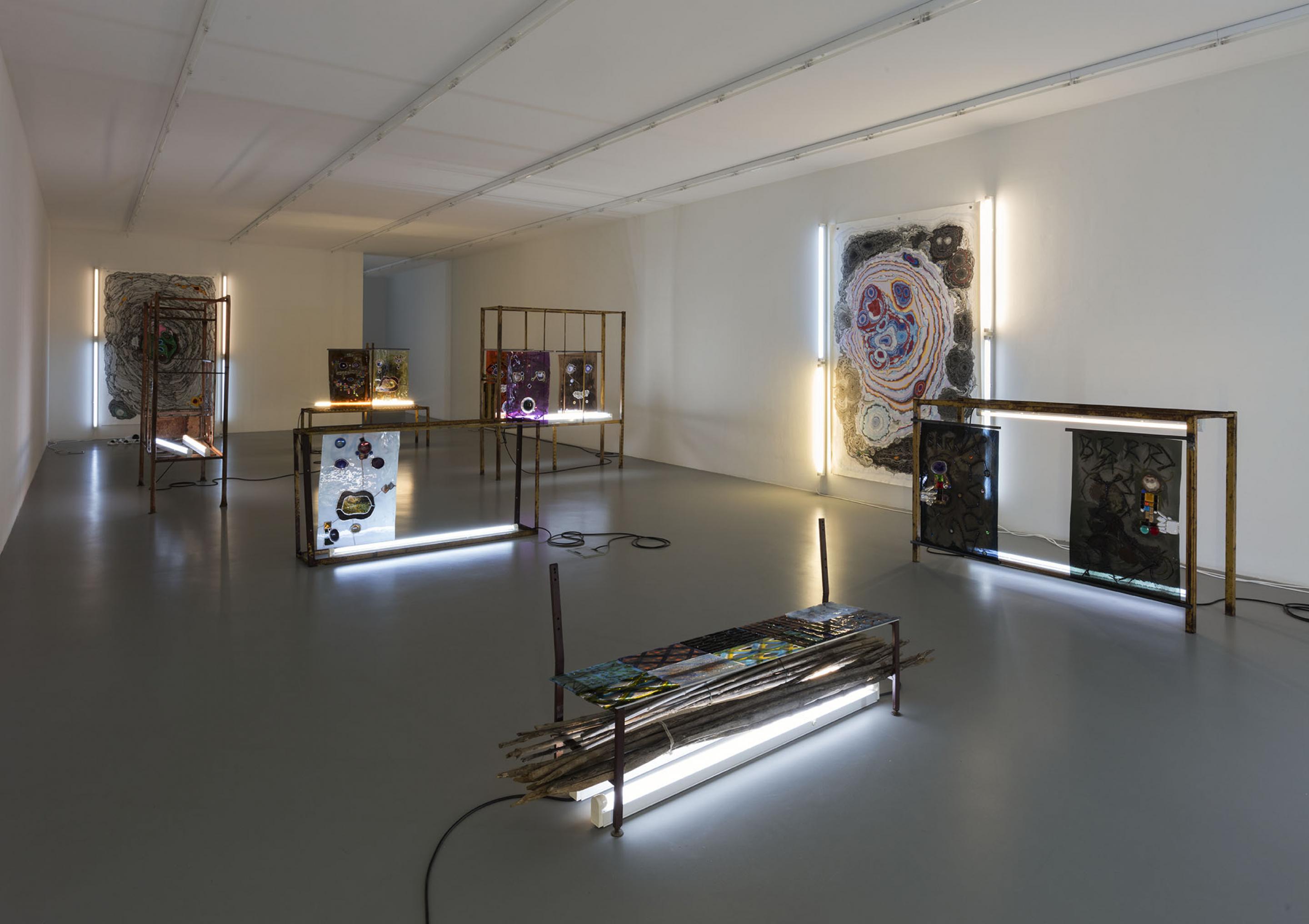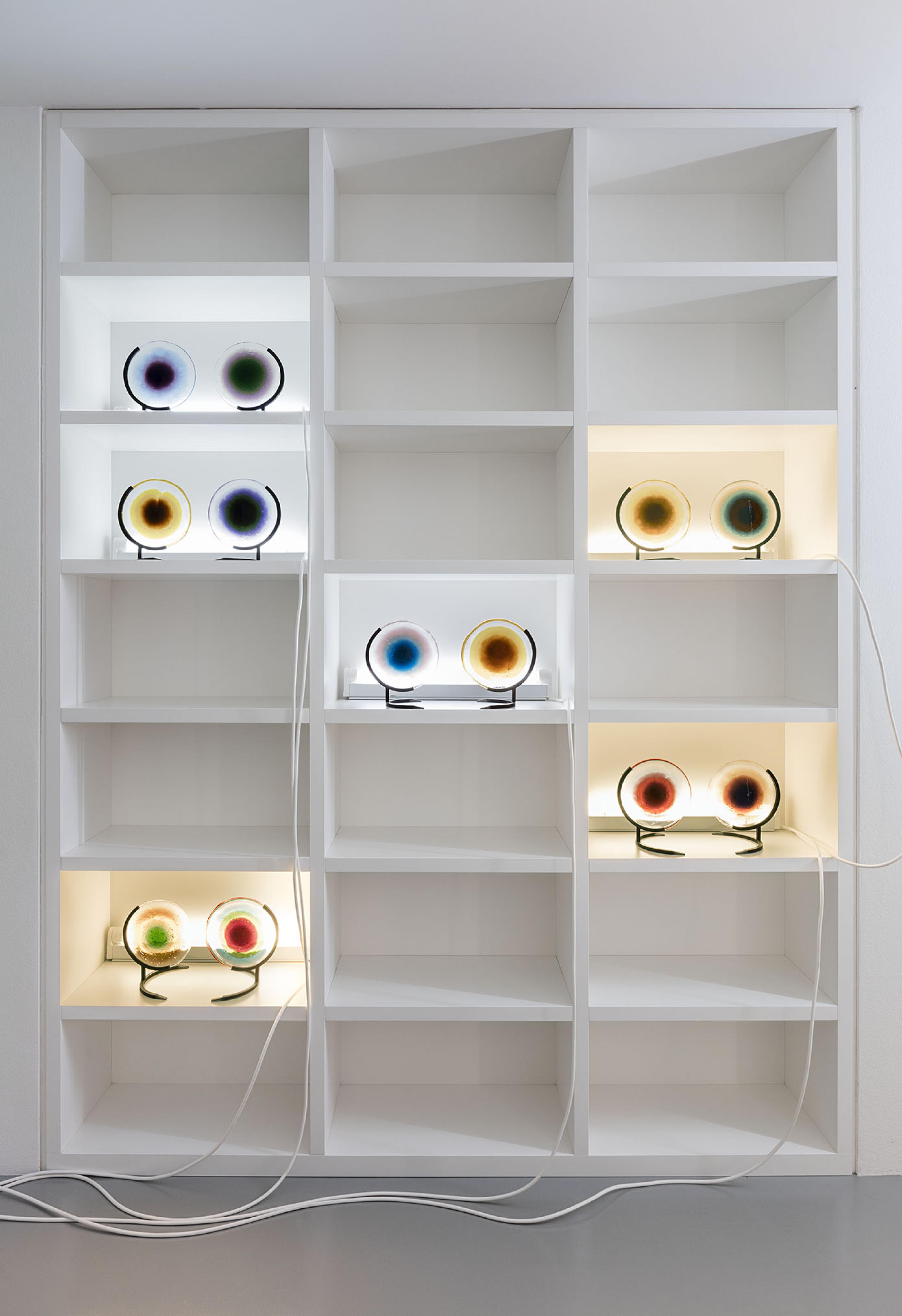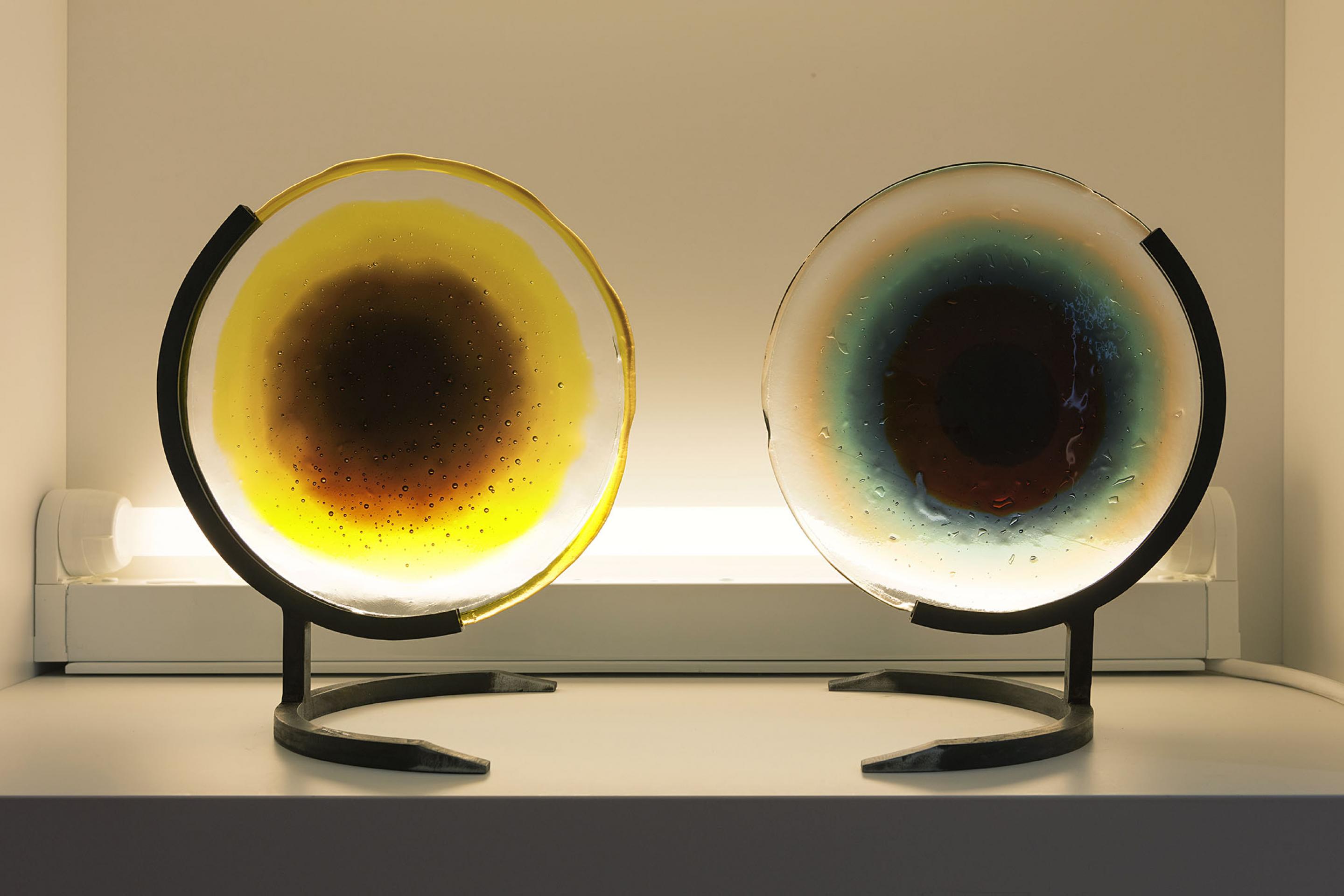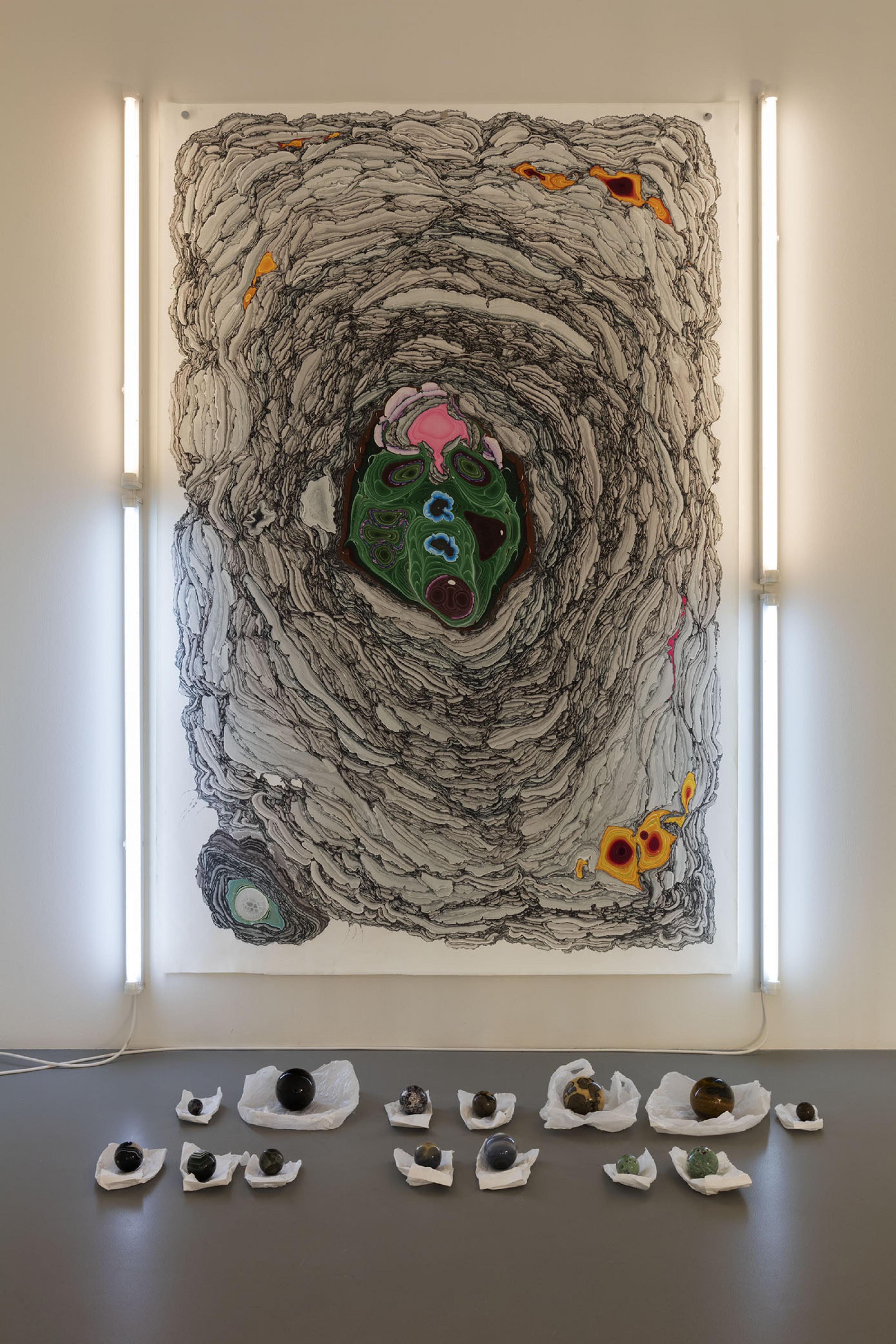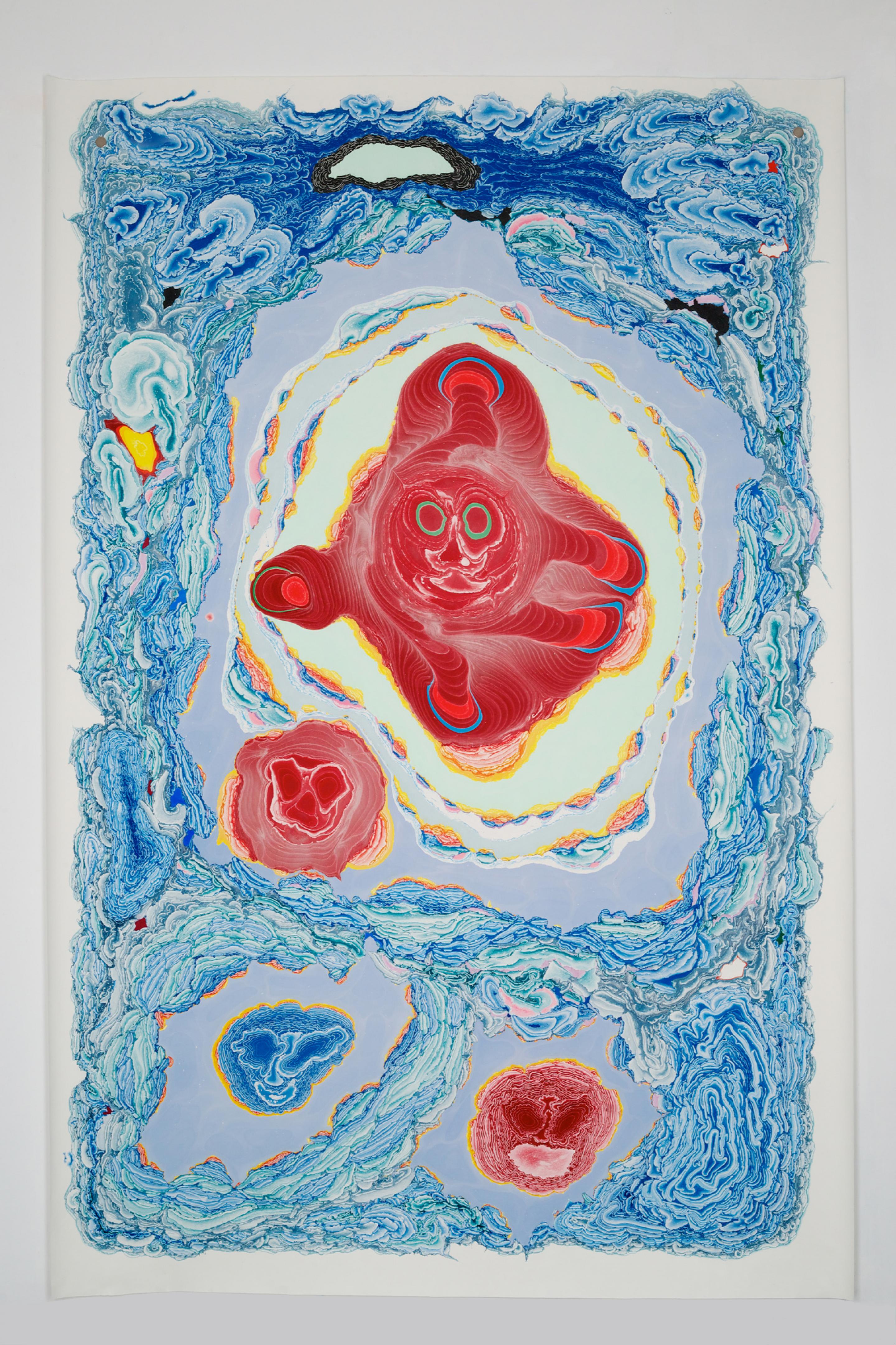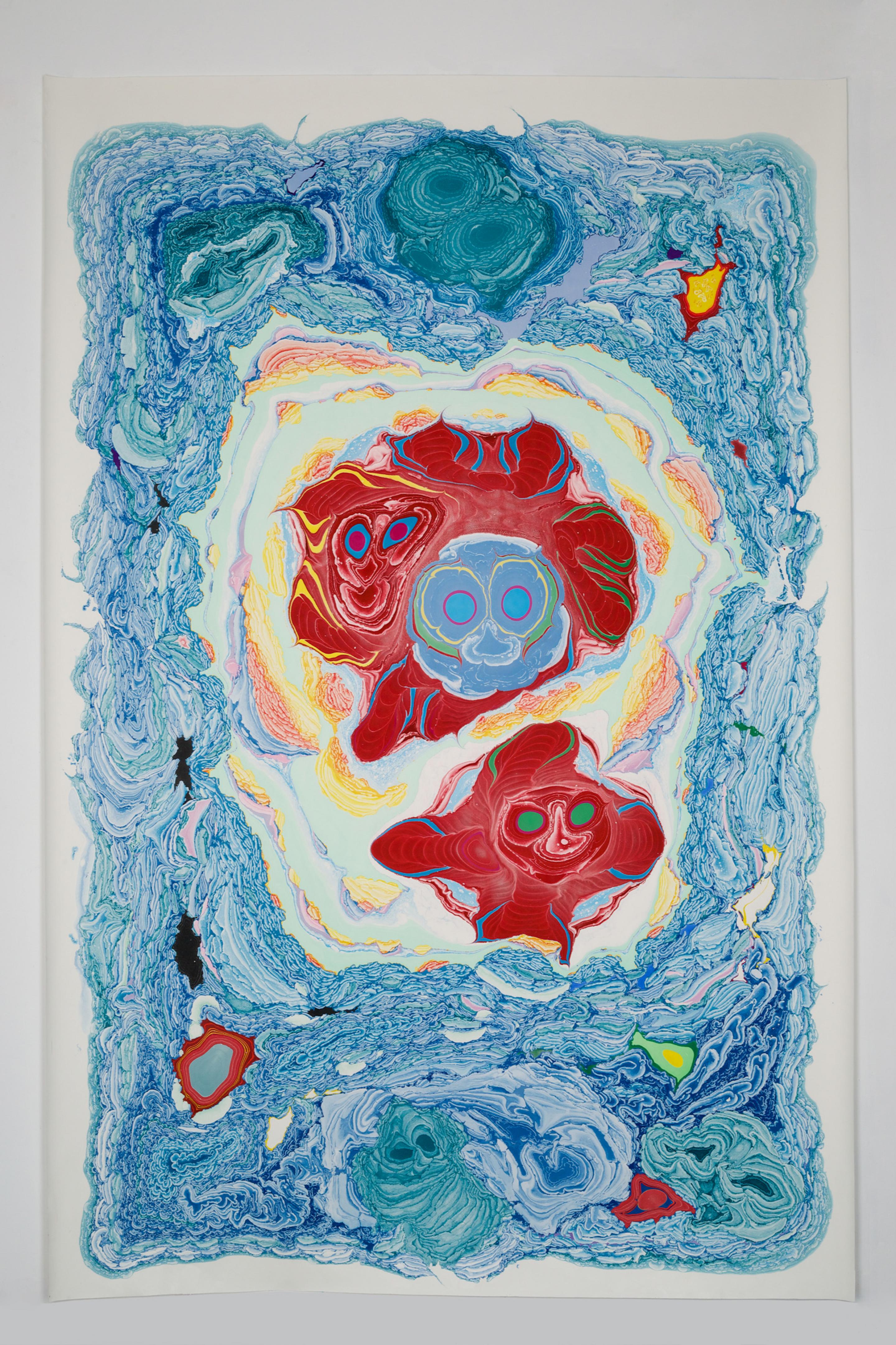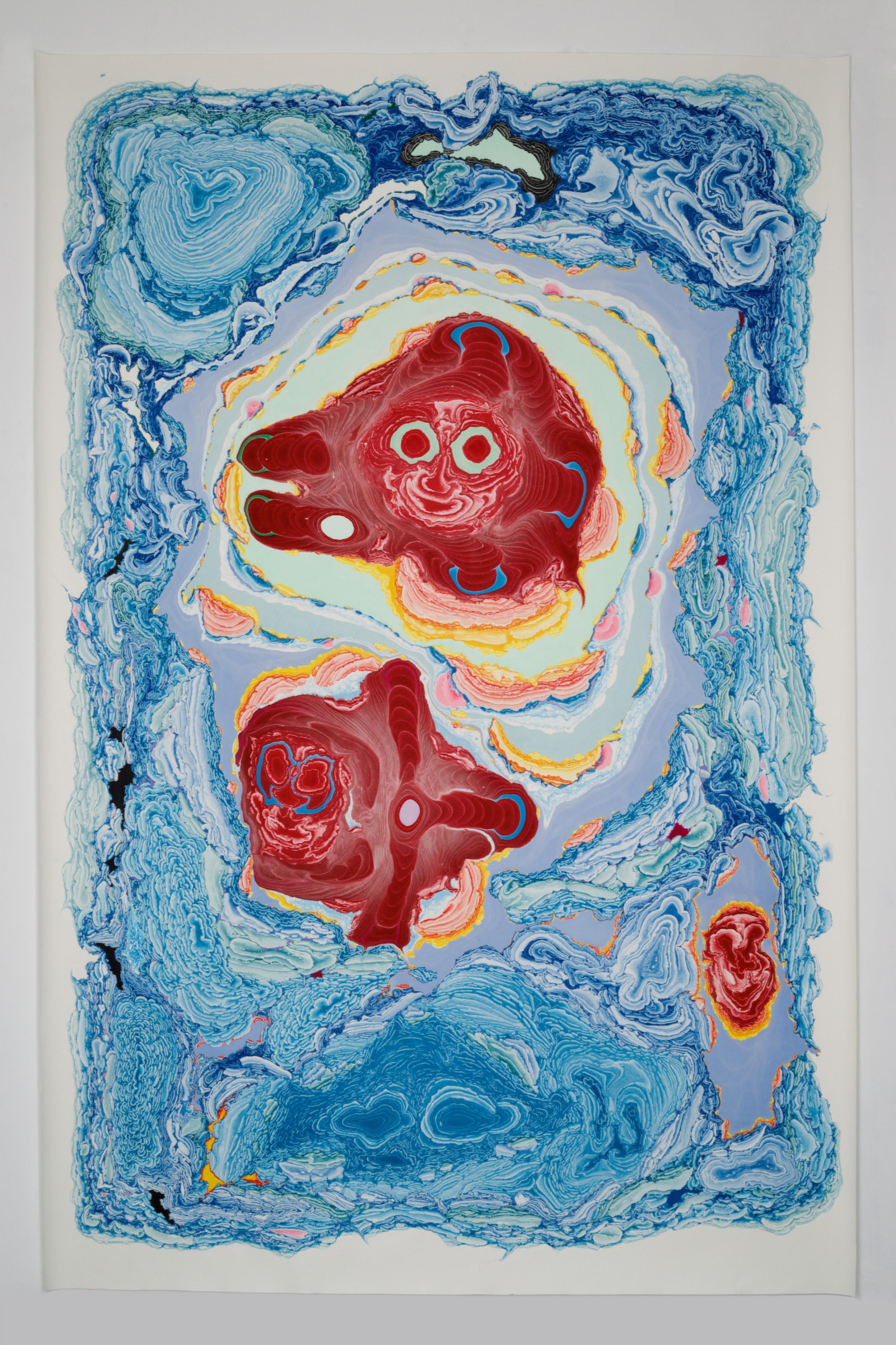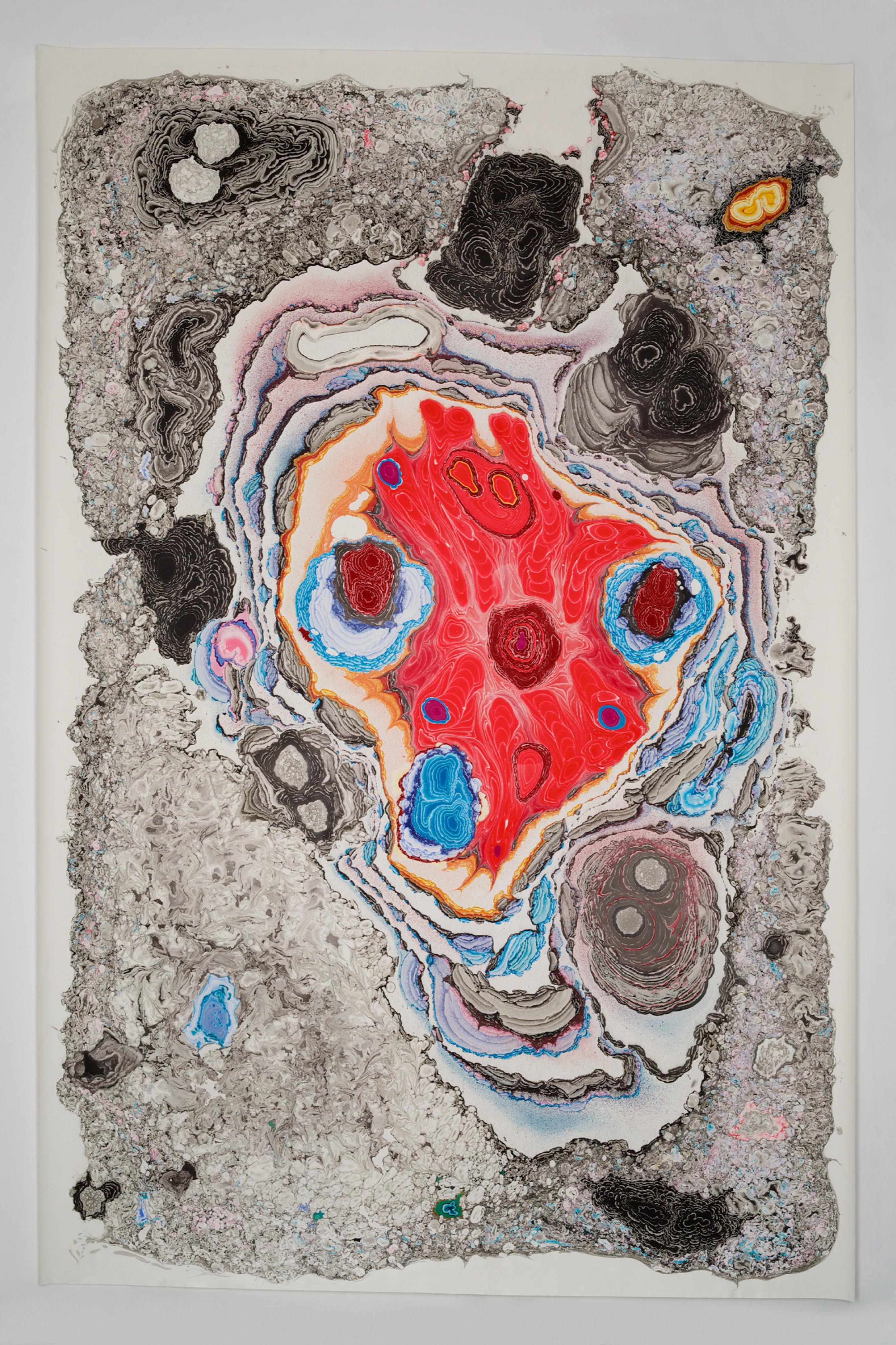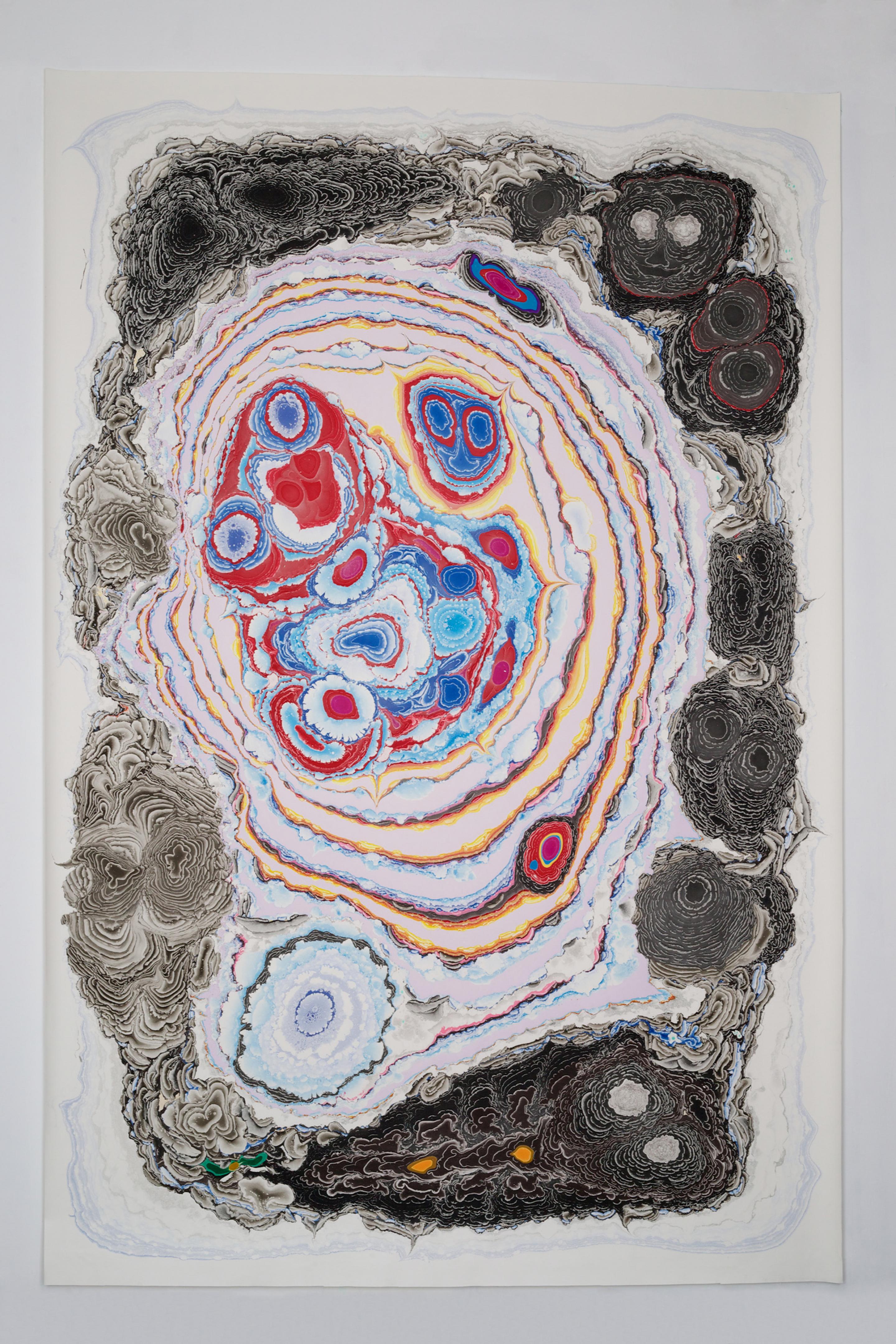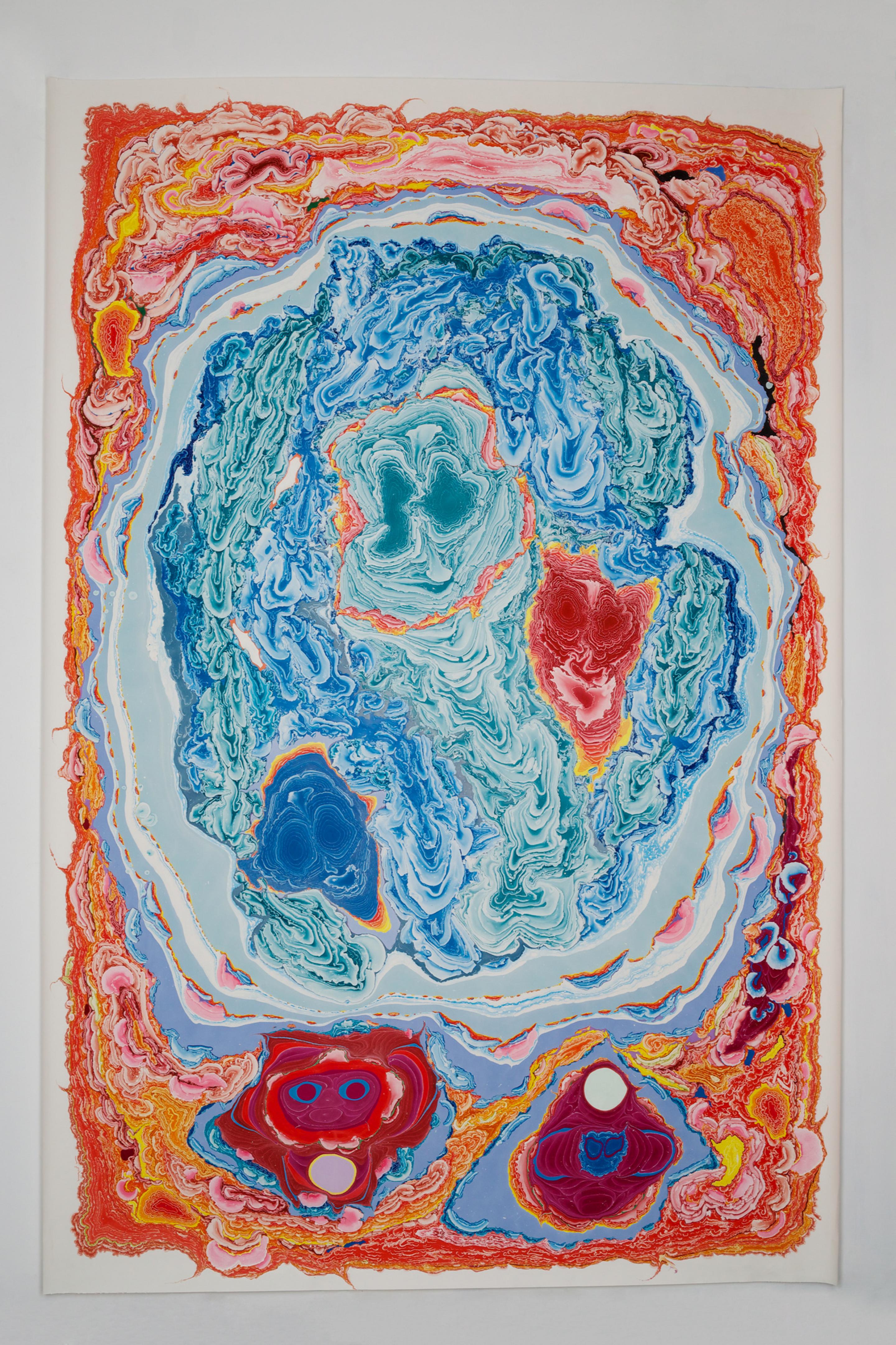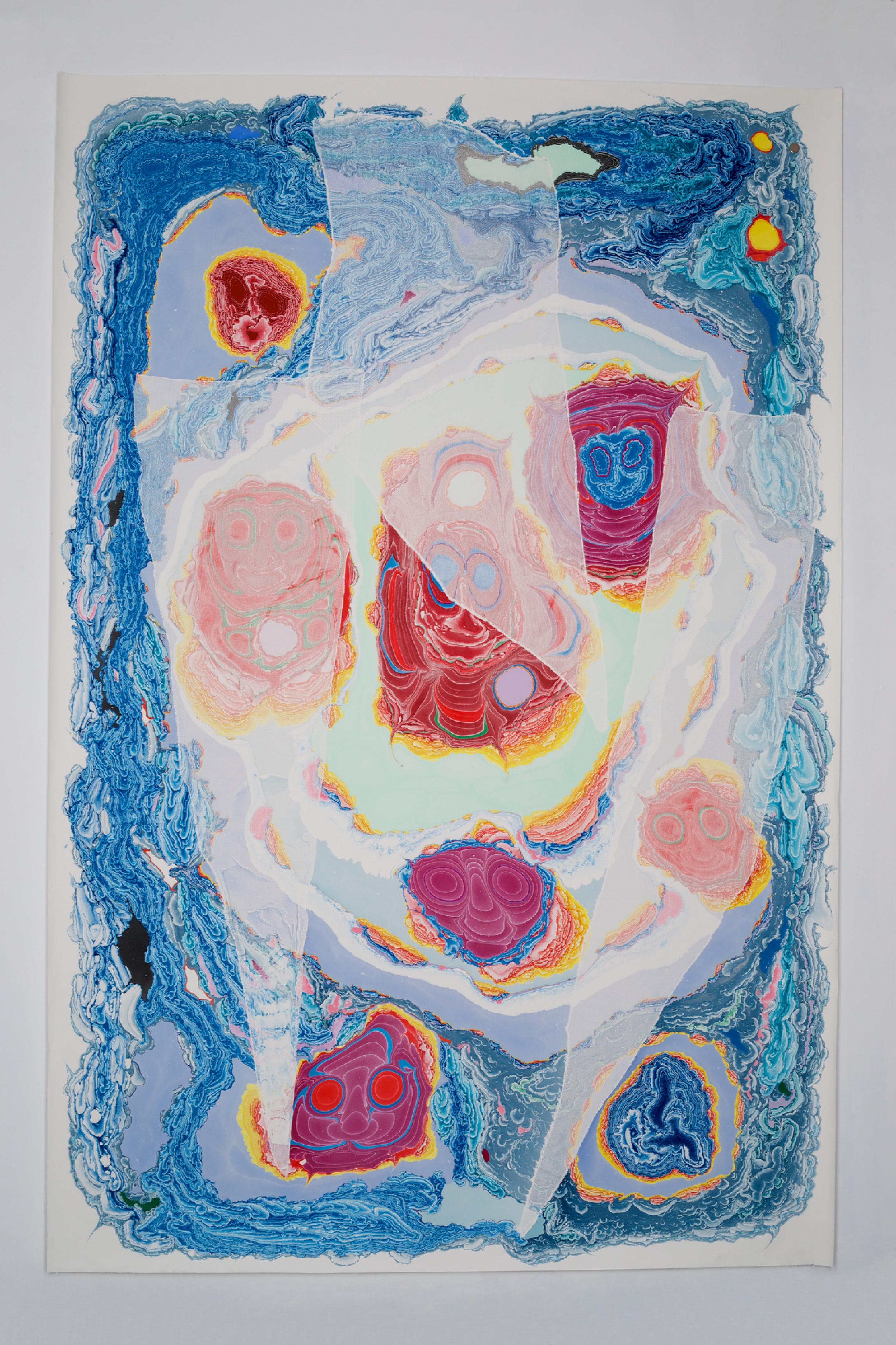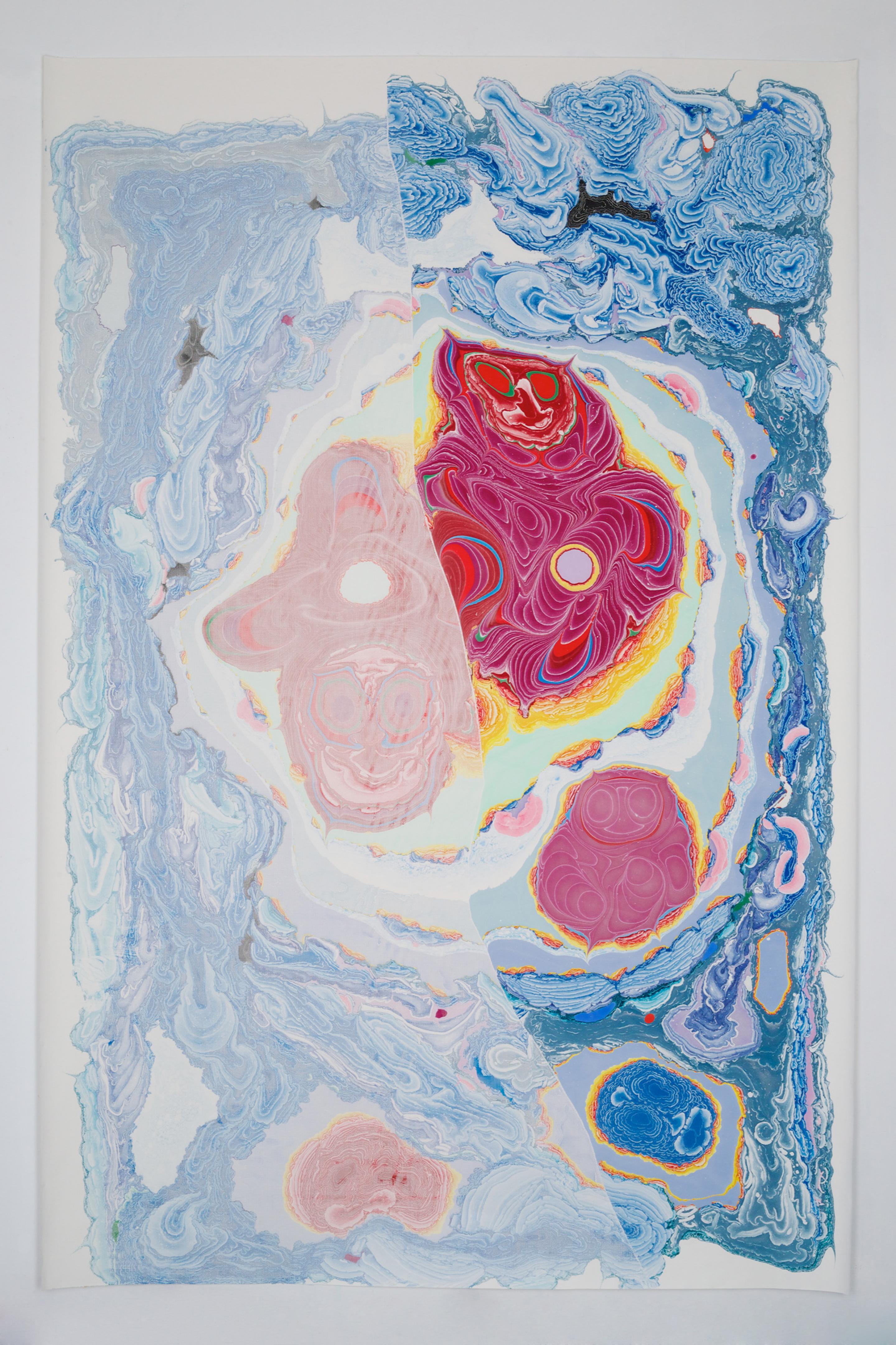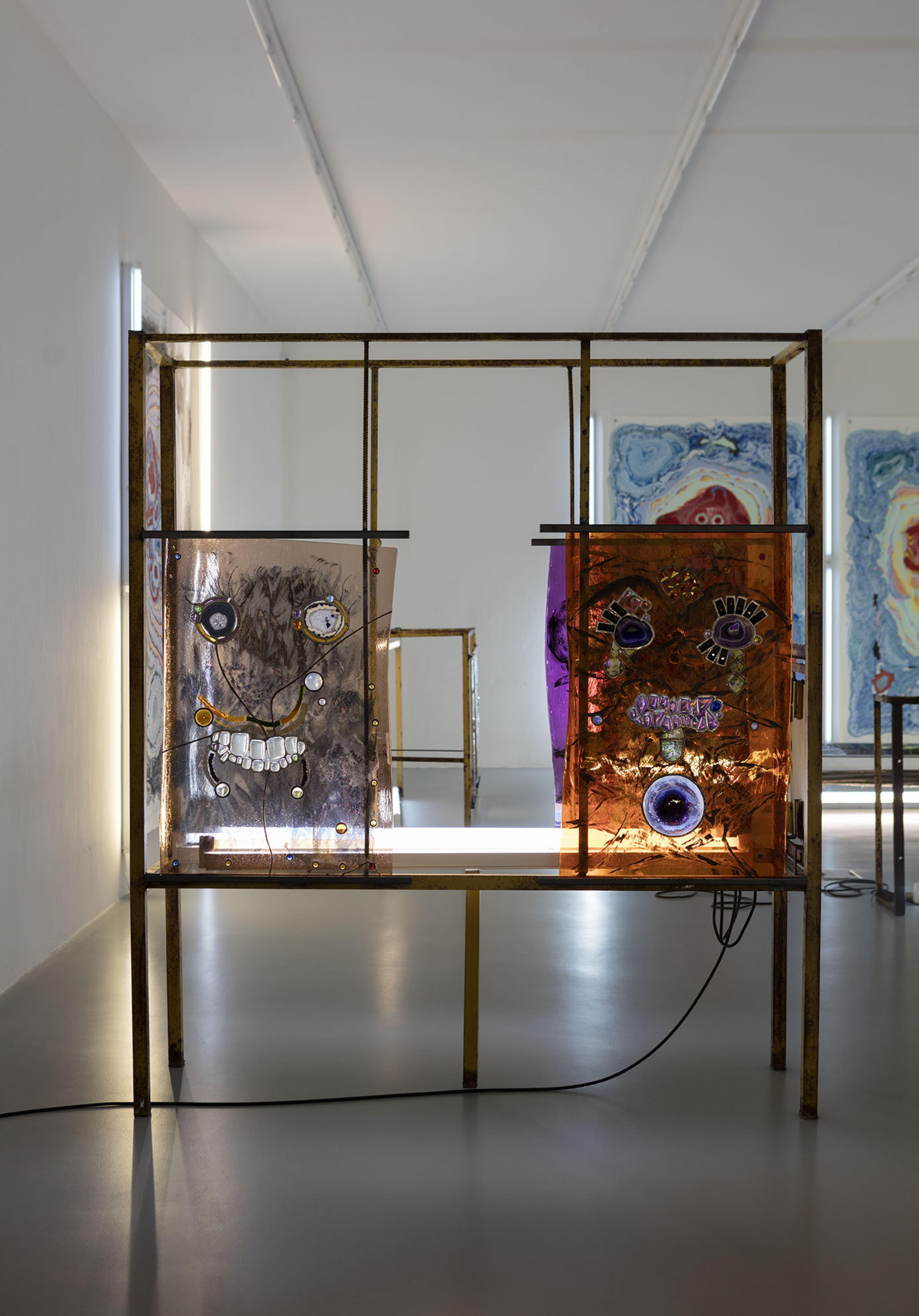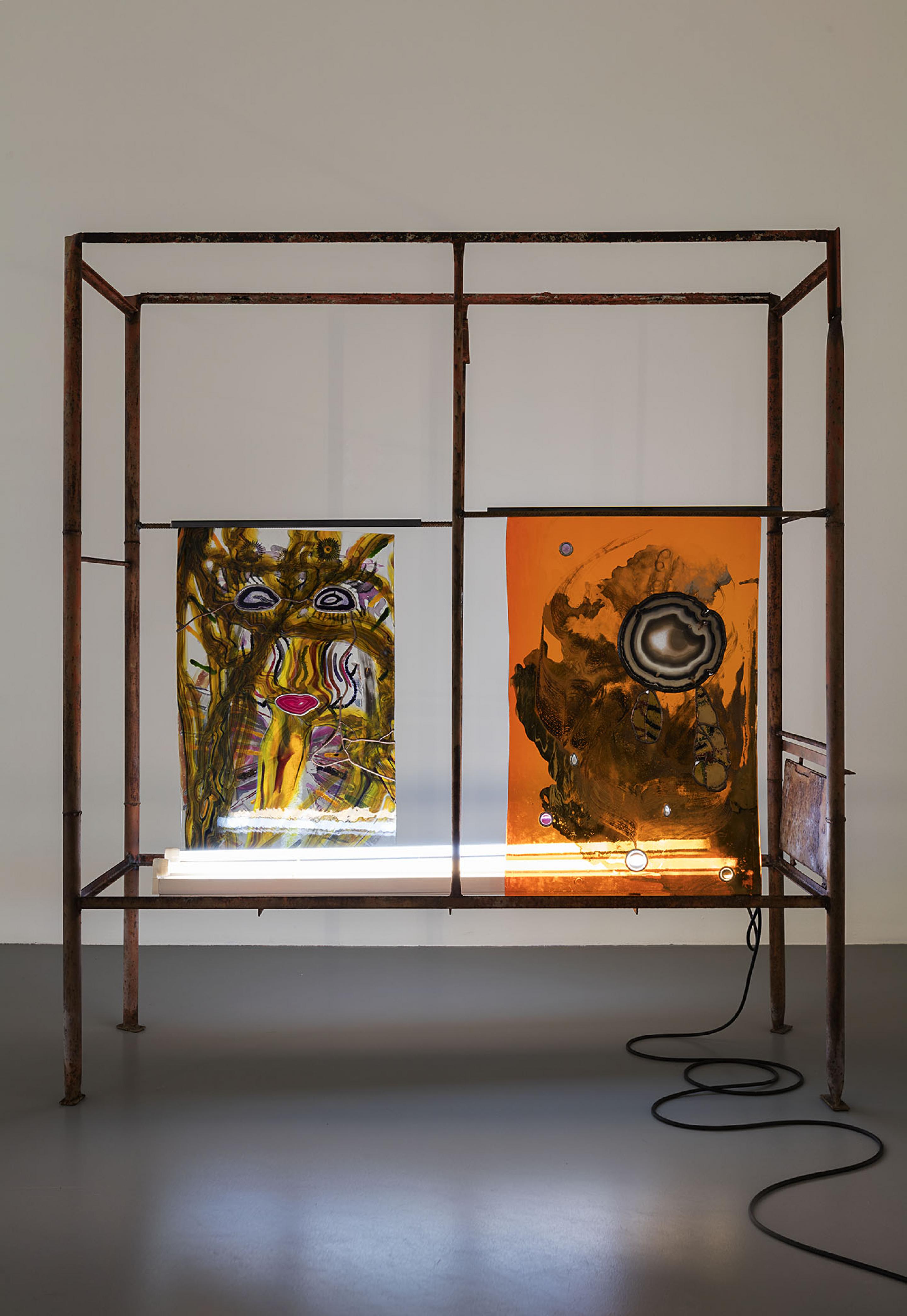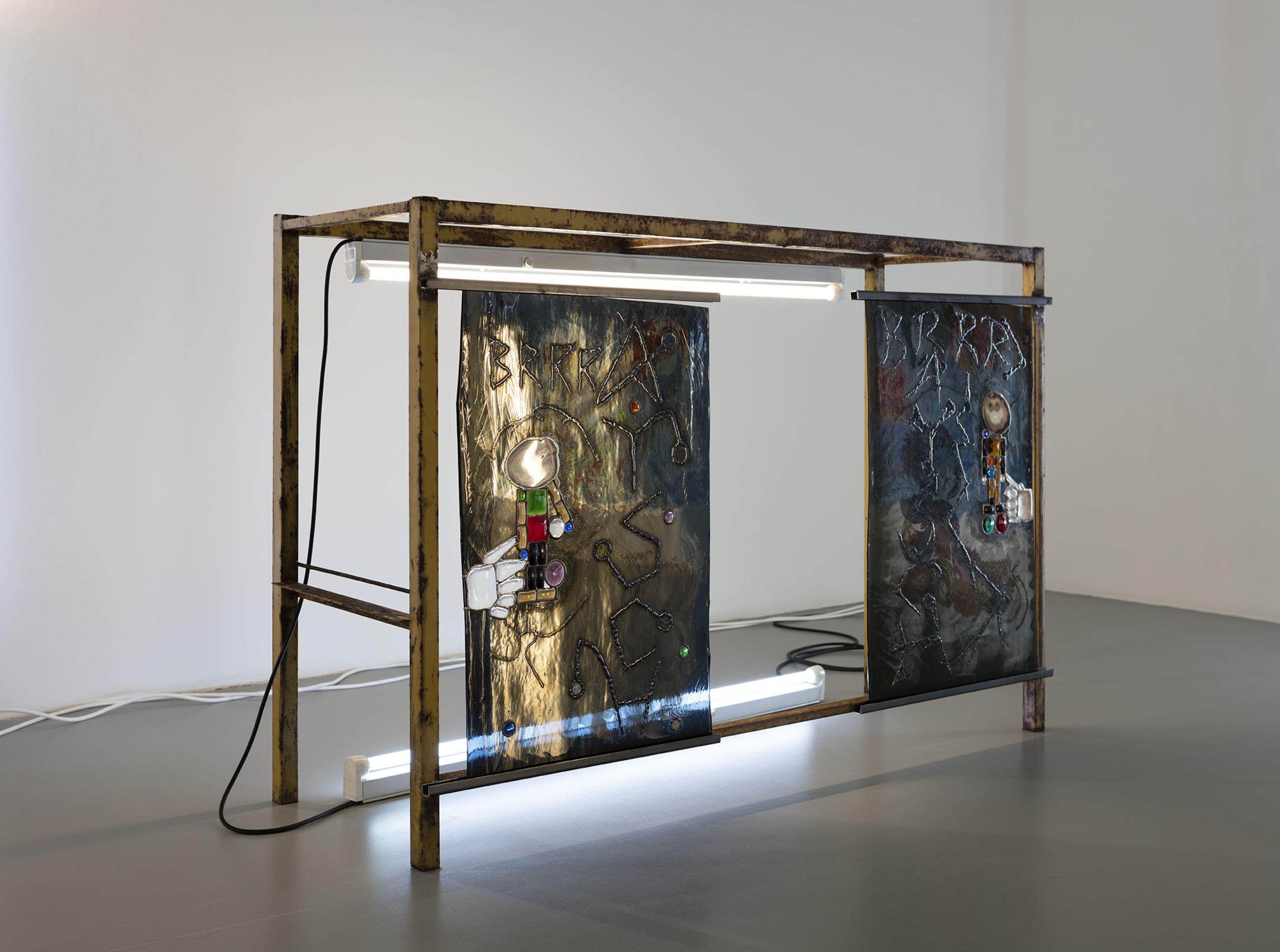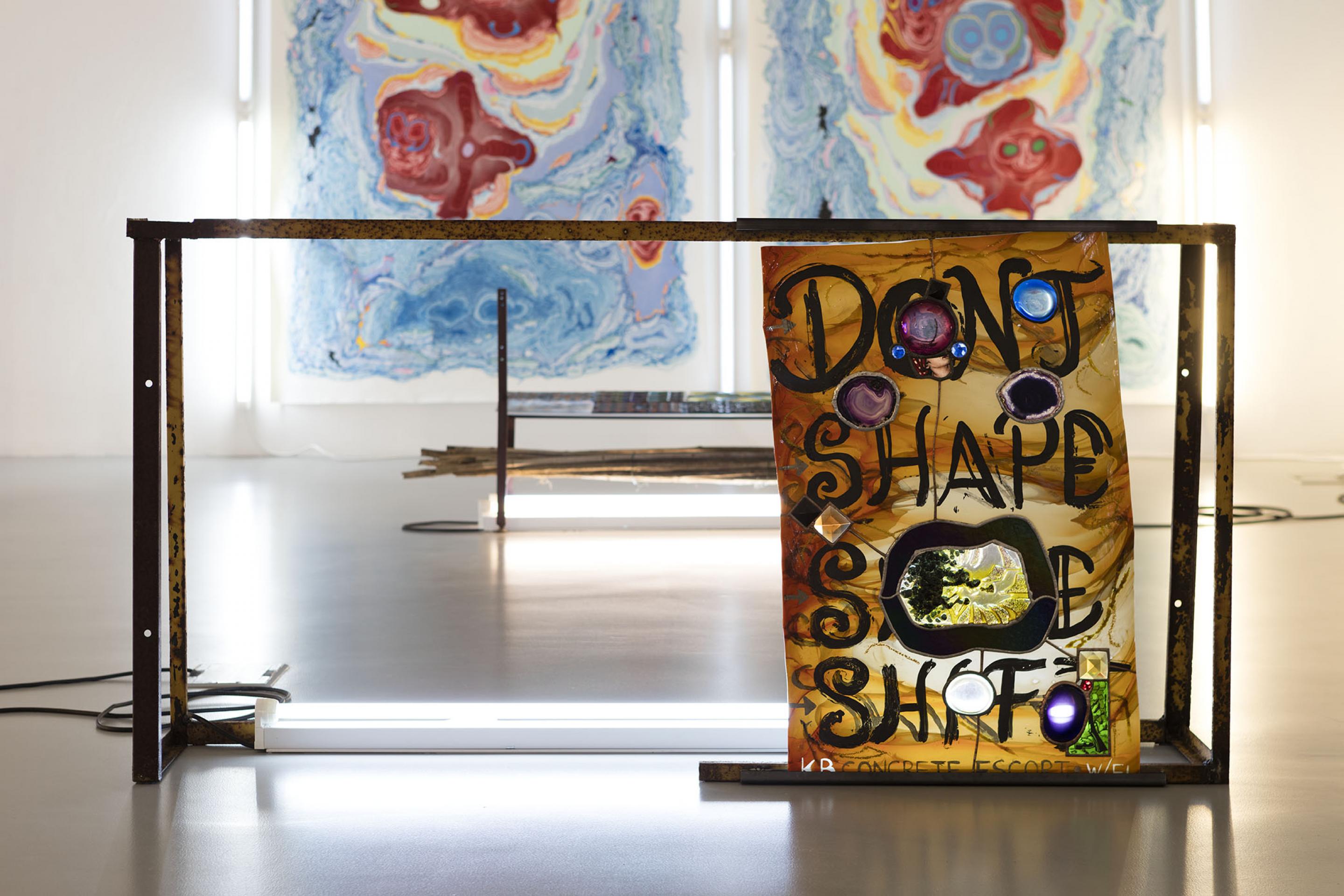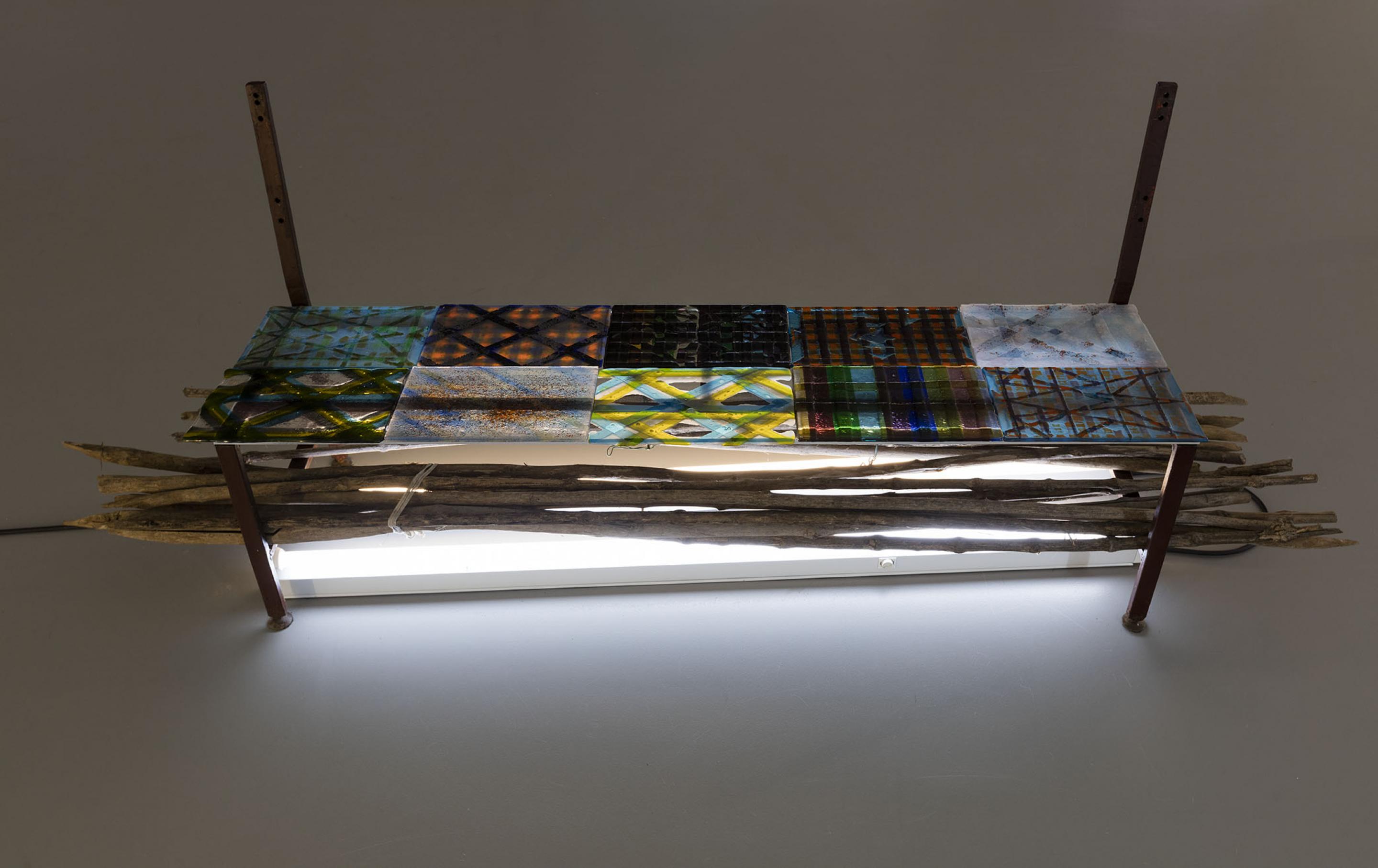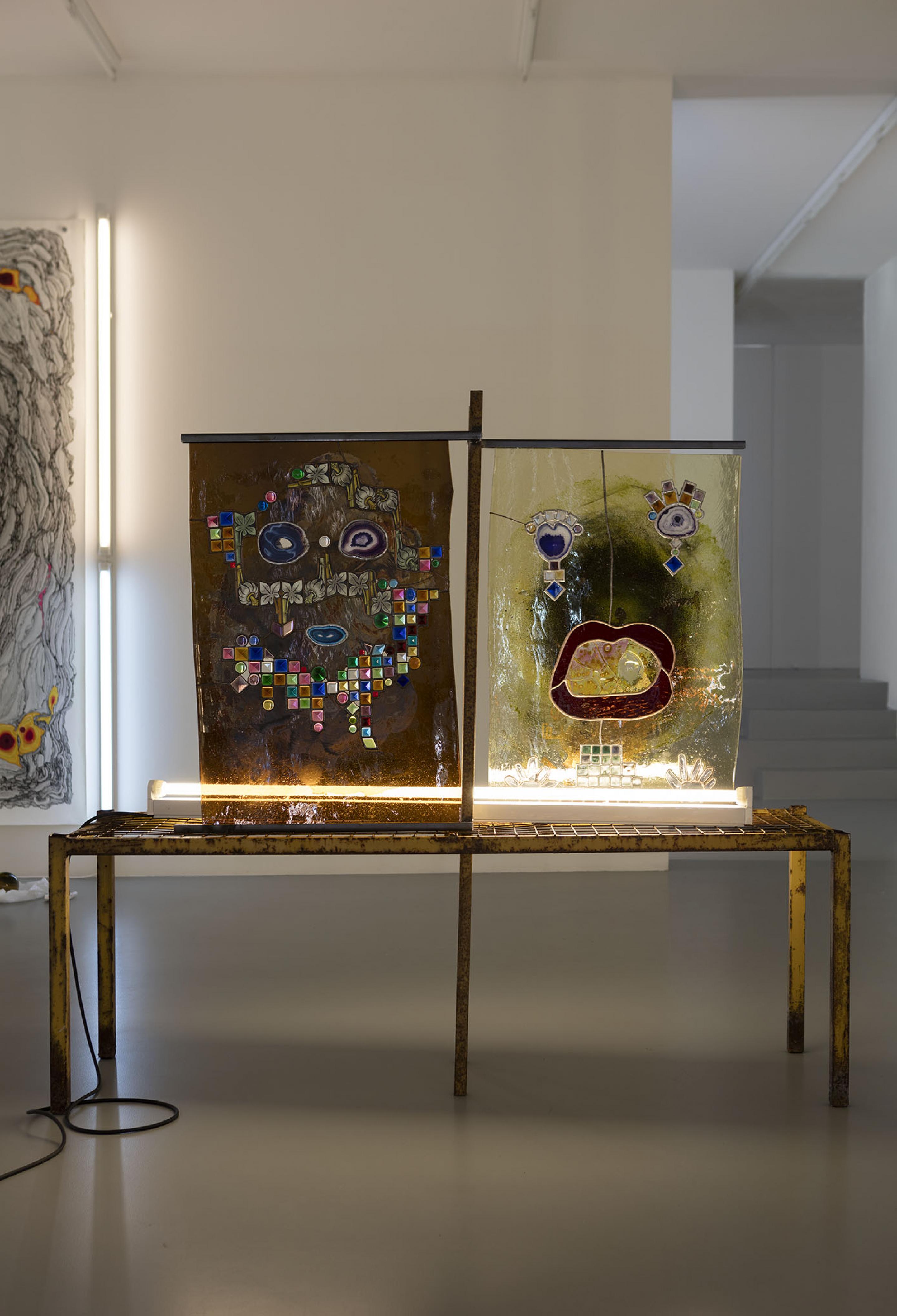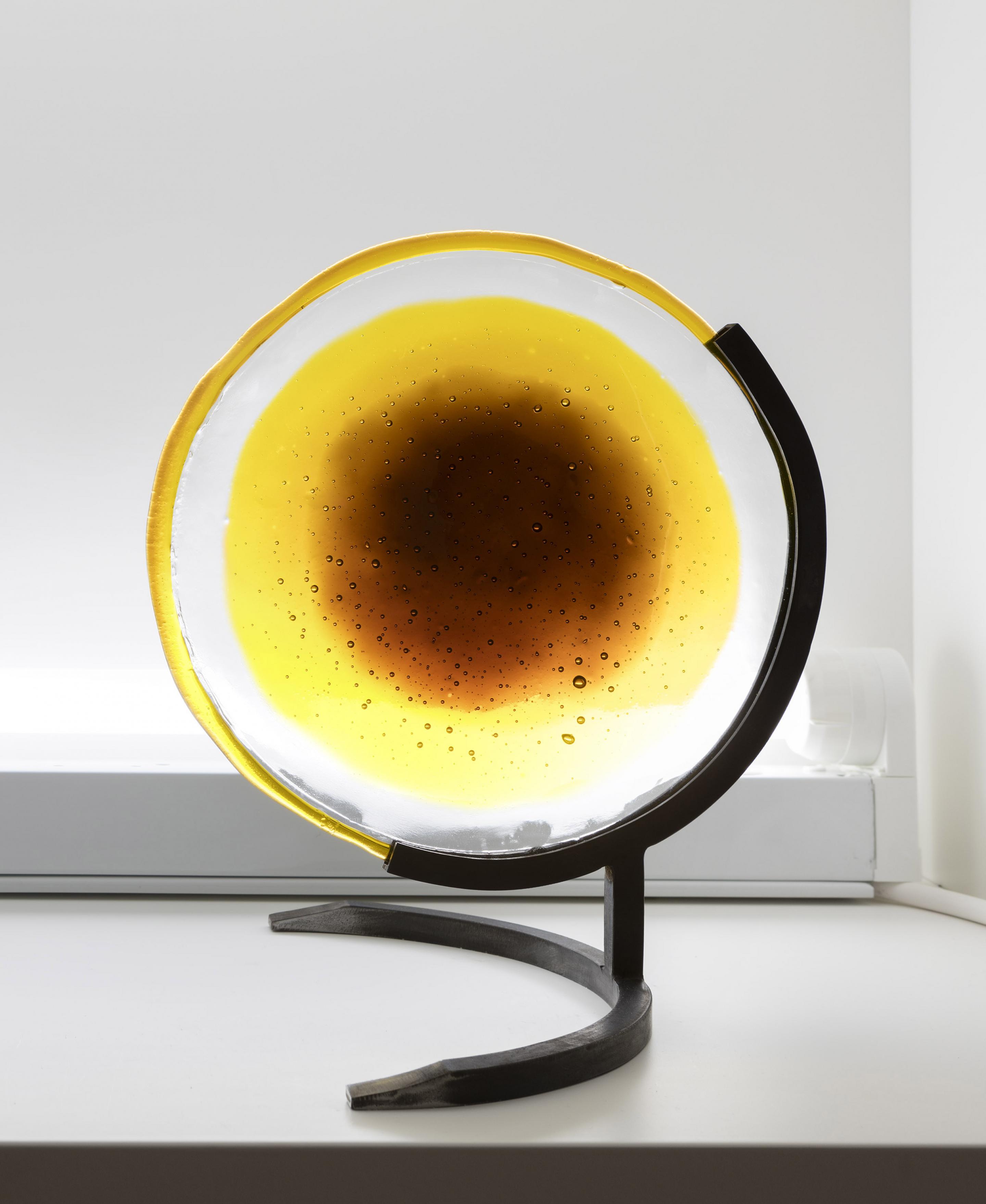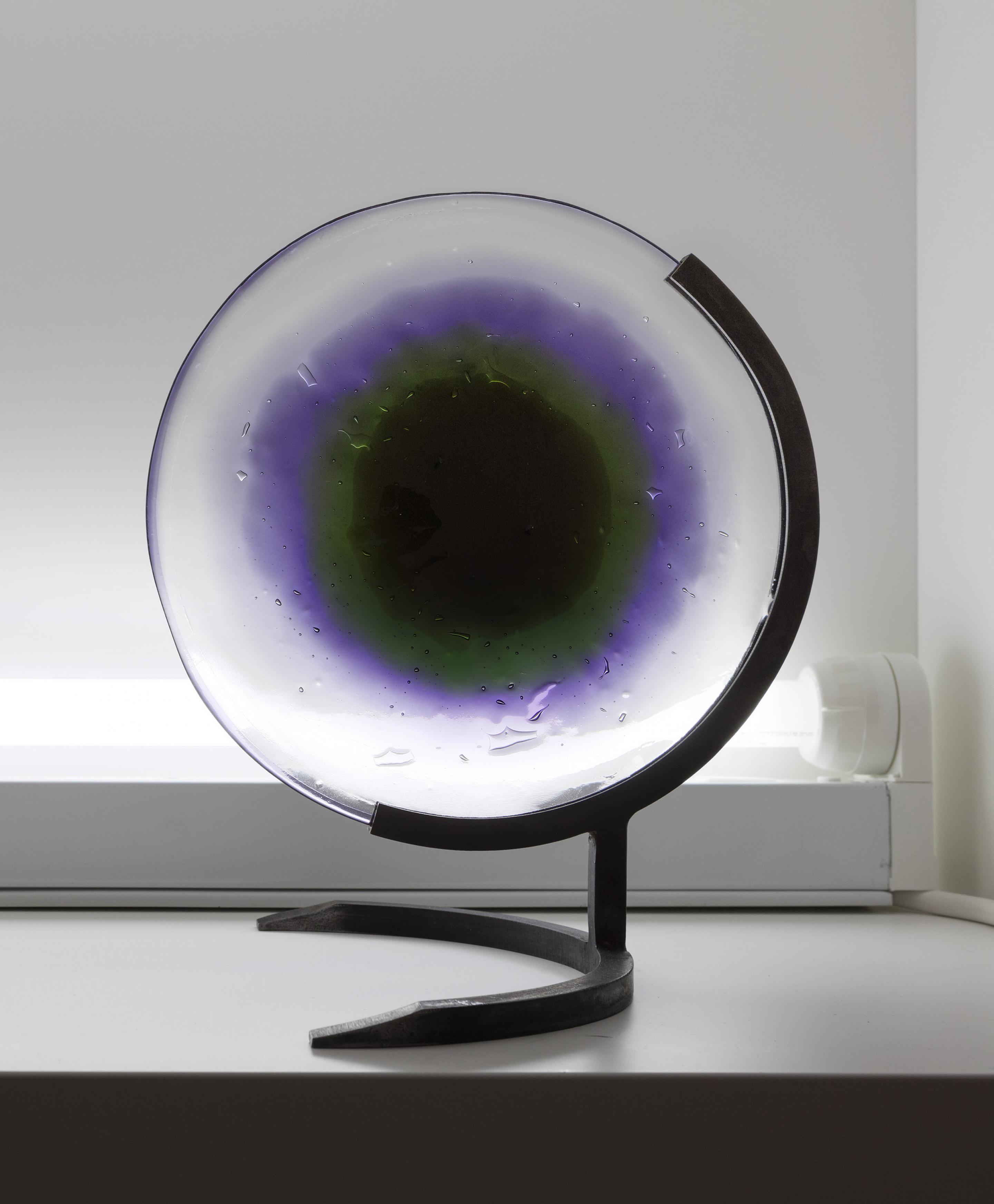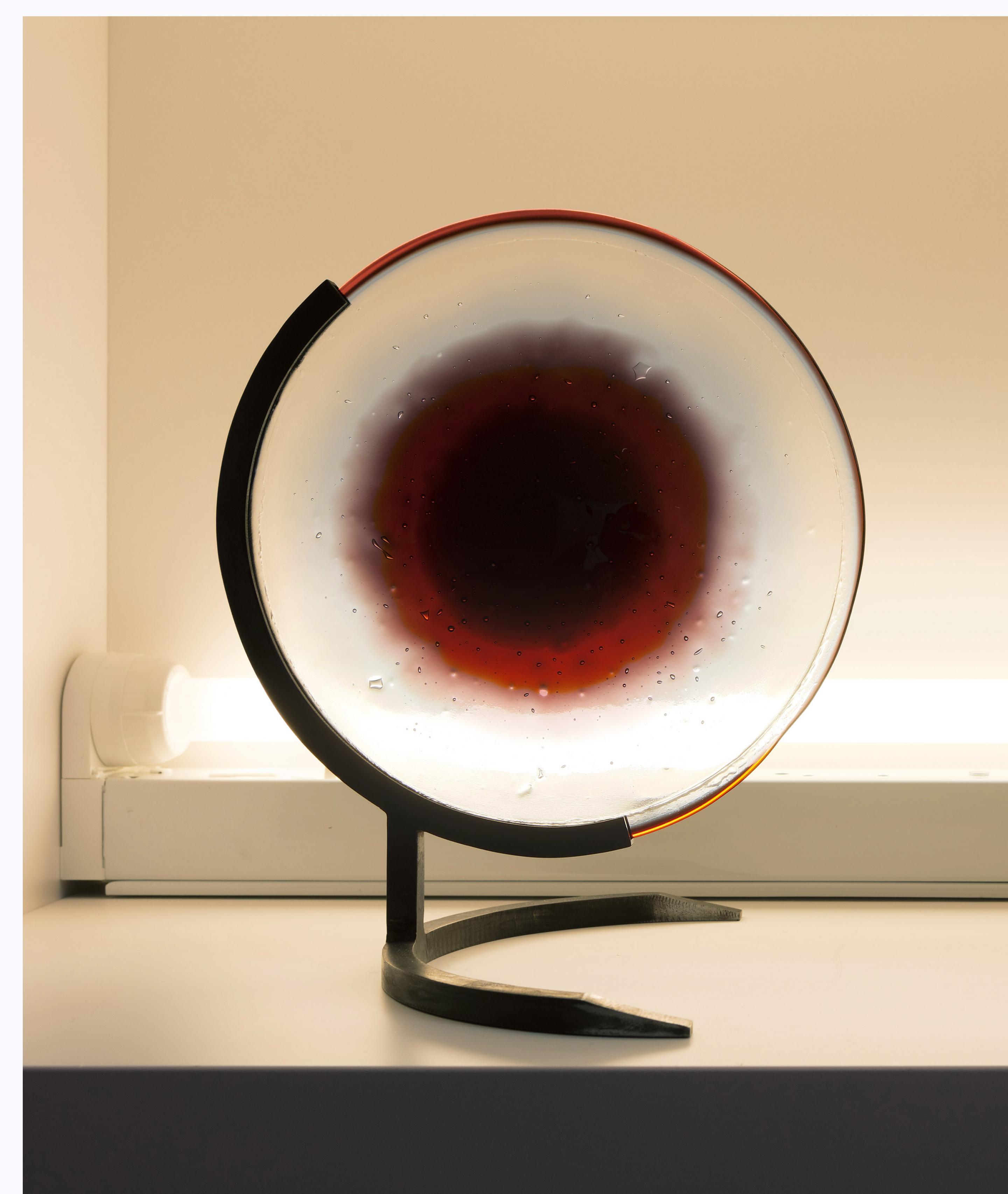KerstinBRÄTSCH
Full-Fall presents Kerstin Brätsch (Poli’ahu’s Cure)
Gió Marconi, Milan
01.06.–29.07.2016
Full-Fall presents Kerstin Brätsch (Poli’ahu’s Cure)
Gió Marconi, Milan
01.06.–29.07.2016
IT
Kerstin Brätsch
Full-Fall presents Kerstin Brätsch (Poli’ahu’s Cure)
Inaugurazione: martedì 31 maggio 2016 dalle 19 alle 21
1 giugno - 29 luglio 2016
lunedì - venerdì: 11-19
La galleria Gió Marconi è lieta di annunciare “Full-Fall presents Kerstin Brätsch (Poli’ahu’s Cure)” la seconda mostra personale di Kerstin Brätsch (1979, vive e lavora a New York).
La pratica di Kerstin Brätsch si muove fluidamente tra i medium e tra la pratica individuale e collettiva, dando vita ad ibridi di pittura, design e performance. Per l’occasione l’artista presenterà nuovi marblings su carta ed una serie di strutture autoportanti parzialmente illuminate da luce al neon che inglobano vetri antichi realizzati in Svizzera.
Completano l’allestimento alcuni elementi realizzati dall’artista in dialogo con Mattia Ruffolo e Davide Stucchi, fondatori del progetto Full-Fall nato nel 2015. Il programma espositivo di Full-Fall consiste in un ciclo di quattro rituali l’anno durante i quali opere e performance interagiscono in una dimensione rurale nella periferia di Milano. Lo scorso 22 Dicembre 2015, le opere di Kerstin Brätsch sono state esposte a Full-Fall per il rituale Invernale.
Kerstin Brätsch nata ad Amburgo, Germania, nel 1979. Vive e lavora a New York. Mostre personali e collettive selezionate: Kerstin Brätsch and Adele Röder as DAS INSTITUT, Serpentine Sackler Gallery, London, UK (2016); Painting 2.0: Expression in the information age, Museum Brandhorst, Munich, Germany (2015); The Forever Now: Contemporary Painting in an Atemporal World, Curated by Laura Hoptman, The Museum of Modern Art, New York, NY (2014); EXPO1: New York, MoMA/PS1, Long Island City, New York as DAS INSTITUT and UNITED BROTHERS (2013).
NOTE SU KERSTIN
1.
Il nero è da intendersi come per le società primitive (pacifiche e matriarcali): rappresenta la fertilità ed è anche il colore delle umide caverne, del fertile suolo e dell’utero della Dea dove la vita ha inizio.
2.
“I swam with giant turtles, I walked on glass (lava) with my sunshields (glass)”.
3.
Luoghi esotici e isolati, popolati da fauna e flora ormai estinte. L’atmosfera è vibrante: un vulcano sfoga e tutt’attorno solo oceano.
4.
I dipinti sono come psicogrammi, segni caldi e immaginifici nei quali non si riconoscono e non
sembrano rappresentati né oggetti né simboli: sono slanci, violenti scariche di energia, che
esprimono sensazioni come caldo o freddo, luce o tenebre, amore o odio, vita o morte.
5.
Vivono nell’acqua o dall'unione di antichi minerali. Non sono ancora né demoni né dei. Arrivano prima dell’Uomo, della fantasia, della storia, del mito, della religione.
6.
Ha seppellito e si è seppellita. Il tabù della morte non ha mai cessato di stimolare il pensiero umano e i rituali funerari possono essere espressioni catartiche simbolo di rinascita.
7.
L’atto ha le sue motivazioni. Il segno è l’effetto ma il lavoro rimane incompiuto.
8.
Tra le linee di piombo dei vetri antichi sono impigliati degli spiriti, come nella rete di un
acchiappasogni.
9.
Alchimia dal greco khymeia (χυμεία), significa fondere, colare, saldare, allegare.
10.
Non rivolge lo sguardo al cielo per trovare Dio. Scende nelle viscere della terra per congiungersi
alla Dea.
11.
Poli’ahu sta piangendo, lacrime votive di pietra.
Mattia Ruffolo
Full-Fall presents Kerstin Brätsch (Poli’ahu’s Cure)
Inaugurazione: martedì 31 maggio 2016 dalle 19 alle 21
1 giugno - 29 luglio 2016
lunedì - venerdì: 11-19
La galleria Gió Marconi è lieta di annunciare “Full-Fall presents Kerstin Brätsch (Poli’ahu’s Cure)” la seconda mostra personale di Kerstin Brätsch (1979, vive e lavora a New York).
La pratica di Kerstin Brätsch si muove fluidamente tra i medium e tra la pratica individuale e collettiva, dando vita ad ibridi di pittura, design e performance. Per l’occasione l’artista presenterà nuovi marblings su carta ed una serie di strutture autoportanti parzialmente illuminate da luce al neon che inglobano vetri antichi realizzati in Svizzera.
Completano l’allestimento alcuni elementi realizzati dall’artista in dialogo con Mattia Ruffolo e Davide Stucchi, fondatori del progetto Full-Fall nato nel 2015. Il programma espositivo di Full-Fall consiste in un ciclo di quattro rituali l’anno durante i quali opere e performance interagiscono in una dimensione rurale nella periferia di Milano. Lo scorso 22 Dicembre 2015, le opere di Kerstin Brätsch sono state esposte a Full-Fall per il rituale Invernale.
Kerstin Brätsch nata ad Amburgo, Germania, nel 1979. Vive e lavora a New York. Mostre personali e collettive selezionate: Kerstin Brätsch and Adele Röder as DAS INSTITUT, Serpentine Sackler Gallery, London, UK (2016); Painting 2.0: Expression in the information age, Museum Brandhorst, Munich, Germany (2015); The Forever Now: Contemporary Painting in an Atemporal World, Curated by Laura Hoptman, The Museum of Modern Art, New York, NY (2014); EXPO1: New York, MoMA/PS1, Long Island City, New York as DAS INSTITUT and UNITED BROTHERS (2013).
NOTE SU KERSTIN
1.
Il nero è da intendersi come per le società primitive (pacifiche e matriarcali): rappresenta la fertilità ed è anche il colore delle umide caverne, del fertile suolo e dell’utero della Dea dove la vita ha inizio.
2.
“I swam with giant turtles, I walked on glass (lava) with my sunshields (glass)”.
3.
Luoghi esotici e isolati, popolati da fauna e flora ormai estinte. L’atmosfera è vibrante: un vulcano sfoga e tutt’attorno solo oceano.
4.
I dipinti sono come psicogrammi, segni caldi e immaginifici nei quali non si riconoscono e non
sembrano rappresentati né oggetti né simboli: sono slanci, violenti scariche di energia, che
esprimono sensazioni come caldo o freddo, luce o tenebre, amore o odio, vita o morte.
5.
Vivono nell’acqua o dall'unione di antichi minerali. Non sono ancora né demoni né dei. Arrivano prima dell’Uomo, della fantasia, della storia, del mito, della religione.
6.
Ha seppellito e si è seppellita. Il tabù della morte non ha mai cessato di stimolare il pensiero umano e i rituali funerari possono essere espressioni catartiche simbolo di rinascita.
7.
L’atto ha le sue motivazioni. Il segno è l’effetto ma il lavoro rimane incompiuto.
8.
Tra le linee di piombo dei vetri antichi sono impigliati degli spiriti, come nella rete di un
acchiappasogni.
9.
Alchimia dal greco khymeia (χυμεία), significa fondere, colare, saldare, allegare.
10.
Non rivolge lo sguardo al cielo per trovare Dio. Scende nelle viscere della terra per congiungersi
alla Dea.
11.
Poli’ahu sta piangendo, lacrime votive di pietra.
Mattia Ruffolo
EN
Kerstin Brätsch
Full-Fall presents Kerstin Brätsch (Poli’ahu’s Cure)
Opening: Tuesday, May 31, 2016; 7pm - 9 pm
June 1 - July 29t, 2016
From Monday to Friday; 11am - 7 pm
Gió Marconi Gallery is proud to announce “Full-Fall presents Kerstin Brätsch (Poli’ahu’s Cure)”, Kerstin Brätsch's (1979, lives and works in New York) second solo show with the gallery.
Kerstin Brätsch’s practice moves fluidly between mediums and between individual and collective practice, giving life to hybrids of painting, design and performance. For this occasion the artist will present new marbling paintings on paper and a series of self-supporting structures, partially illuminated by neon light, which incorporate ancient glass made in Switzerland.
The exhibition is framed by elements created by the artist in dialogue with Mattia Ruffolo and Davide Stucchi, founders of Full-Fall, a project started in 2015. The Full-Fall exhibition program consists of an annual cycle of four rituals, during which artworks and performances interact in a rural environment on the outskirts of Milan. On December 22, 2015, the works of Kerstin Brätsch took part in Full-Fall’s winter ritual.
Kerstin Brätsch, (1979, born in Hamburg, Germany). Lives and works in New York. Selected solo and group shows include: Kerstin Brätsch and Adele Röder as DAS INSTITUT, Serpentine Sackler Gallery, London, UK (2016); Painting 2.0: Expression in the information age, Museum Brandhorst, Munich, Germany (2015); The Forever Now: Contemporary Painting in an Atemporal World, Curated by Laura Hoptman, The Museum of Modern Art, New York, NY (2014); EXPO1: New York, MoMA/PS1, Long Island City, New York as DAS INSTITUT and UNITED BROTHERS (2013).
NOTES ON KERSTIN
1.
Black should be perceived as in primitive (peaceful and matriarchal) societies: it represents fertility, and it is also the color of damp caves, fertile soil, the uterus of the Goddess where life begins.
2.
“I swam with giant turtles, I walked on glass (lava) with my sunshields (glass)”.
3.
Exotic and isolated places, populated by flora and fauna now extinct. The atmosphere is vibrant: a volcano vents smoke, and all around there is only the ocean.
4.
The paintings are like psychograms, warm and richly imaginative signs in which neither objects
nor symbols are recognizable or seem to be represented: they are outbursts, violent discharges of energy that express sensations like hot or cold, light or shadow, love or hate, life or death.
5.
They live in the water and from the union of ancient minerals. They are not yet either demons or gods. They come before Man, fantasy, history, myth, religion.
6.
She has buried, and has buried herself. The taboo of death has never ceased to stimulate human thought, and funeral rites can be cathartic expressions symbolizing rebirth.
7.
The act has its motivations. The sign is the effect, but the work remains unfinished.
8.
Spirits are snared between the lines of lead of antique windows, as in the net of a dreamcatcher.
9.
Alchemy by greek khymeia (χυμεία), means melting, dripping, welding, inclose.
10.
She does not look to the sky to find God. She descends into the bowels of the earth to unite with the Goddess.
11.
Poli’ahu is crying, votive tears stones.
Mattia Ruffolo
Full-Fall presents Kerstin Brätsch (Poli’ahu’s Cure)
Opening: Tuesday, May 31, 2016; 7pm - 9 pm
June 1 - July 29t, 2016
From Monday to Friday; 11am - 7 pm
Gió Marconi Gallery is proud to announce “Full-Fall presents Kerstin Brätsch (Poli’ahu’s Cure)”, Kerstin Brätsch's (1979, lives and works in New York) second solo show with the gallery.
Kerstin Brätsch’s practice moves fluidly between mediums and between individual and collective practice, giving life to hybrids of painting, design and performance. For this occasion the artist will present new marbling paintings on paper and a series of self-supporting structures, partially illuminated by neon light, which incorporate ancient glass made in Switzerland.
The exhibition is framed by elements created by the artist in dialogue with Mattia Ruffolo and Davide Stucchi, founders of Full-Fall, a project started in 2015. The Full-Fall exhibition program consists of an annual cycle of four rituals, during which artworks and performances interact in a rural environment on the outskirts of Milan. On December 22, 2015, the works of Kerstin Brätsch took part in Full-Fall’s winter ritual.
Kerstin Brätsch, (1979, born in Hamburg, Germany). Lives and works in New York. Selected solo and group shows include: Kerstin Brätsch and Adele Röder as DAS INSTITUT, Serpentine Sackler Gallery, London, UK (2016); Painting 2.0: Expression in the information age, Museum Brandhorst, Munich, Germany (2015); The Forever Now: Contemporary Painting in an Atemporal World, Curated by Laura Hoptman, The Museum of Modern Art, New York, NY (2014); EXPO1: New York, MoMA/PS1, Long Island City, New York as DAS INSTITUT and UNITED BROTHERS (2013).
NOTES ON KERSTIN
1.
Black should be perceived as in primitive (peaceful and matriarchal) societies: it represents fertility, and it is also the color of damp caves, fertile soil, the uterus of the Goddess where life begins.
2.
“I swam with giant turtles, I walked on glass (lava) with my sunshields (glass)”.
3.
Exotic and isolated places, populated by flora and fauna now extinct. The atmosphere is vibrant: a volcano vents smoke, and all around there is only the ocean.
4.
The paintings are like psychograms, warm and richly imaginative signs in which neither objects
nor symbols are recognizable or seem to be represented: they are outbursts, violent discharges of energy that express sensations like hot or cold, light or shadow, love or hate, life or death.
5.
They live in the water and from the union of ancient minerals. They are not yet either demons or gods. They come before Man, fantasy, history, myth, religion.
6.
She has buried, and has buried herself. The taboo of death has never ceased to stimulate human thought, and funeral rites can be cathartic expressions symbolizing rebirth.
7.
The act has its motivations. The sign is the effect, but the work remains unfinished.
8.
Spirits are snared between the lines of lead of antique windows, as in the net of a dreamcatcher.
9.
Alchemy by greek khymeia (χυμεία), means melting, dripping, welding, inclose.
10.
She does not look to the sky to find God. She descends into the bowels of the earth to unite with the Goddess.
11.
Poli’ahu is crying, votive tears stones.
Mattia Ruffolo
